The outdoors has a diversity problem. It is time we noticed... and did something about it.
Last summer, beginning in July, we embarked on a 10-week inclusive community outdoor challenge. For 10 weeks, through our newsletter and podcast, we explored the topic of inclusion in the outdoors, and I shared my personal experiences as I completed each week's challenge.
Memorial Day is a time to remember and honor military personnel who died while serving our country. For lots of us, it is also the unofficial start to summer. Since many of you are new subscribers since last summer, it seemed a good time to re-share our 10-week outdoor challenge.
I admit it wasn't easy to stick with it, and 10 weeks felt surprisingly long. However, along the way, I had some great discussions, met interesting people, learned lots, and visited places in my own backyard that I might not have done without the challenge. It was my version of Self Work for last summer and I know some of you joined me as well.
Just as with most Self Work, there were ah-ha moments and serendipitous learnings, which changed me. Maybe the changes were small and subtle, but they impacted how I think about the outdoors, made me notice more, and helped me speak up and step up. This 10-week challenge continues to work on me, even now.
This post was built out over weeks and shared across 10 different newsletters. When it is combined like this, it is really long and dense, even for me. Because of that, it will be helpful to view this post online and use the table of contents navigation feature to explore all that is included.
I don't expect many of you will read it all, follow all the links included, or do all of the challenges. Maybe you'll just scan through them and pick one or two that speak to you. Maybe you did one or two last year and would like to pick something else for this summer. Perhaps you are looking for something to challenge the older kids in your life or some activities while on vacation.
Whatever your interest, my challenge to you is to encourage you to get outside more, notice who is and isn't there, consider your own practices, and think about small changes you can make to build a more inclusive outdoors right where you are.
I'd also like to invite you to share your experiences or reflections by commenting on this post. Spread the fun by sharing this with a friend. Please note that you'll need to register at The Inclusive Community and sign in to comment.
You'll also be able to find transcripts of the audio for my weekly experiences at this PAGE.
NOTE: In several spots throughout the challenge, we mention a book giveaway. Reminder this was from last year. We do have plans for another giveaway later this summer, but there is not an active giveaway at the moment. Also, I've re-tested all of the links, but if you find any that don't work, drop me an email and I'll clean them up. You can reach me at amesanders@stateofinclusion.com
Get out and enjoy the outdoors this summer. It is a place we all belong!
INTRODUCTION
-Related Links
Listen to the episode that inspired the challenge: Diversity Education In Nature, with Tania Marien, Dan Kriesberg, Camille Simone Edwards.
You can learn more about the concept of Self Work by listening to Inclusion Starts Here.
You can learn more about eco-justice and environmental justice through my interview with Rebecca Bolich-Wade: Eco-Justice - Justice for Whom?
Here's the related link to Our Bookstore on Bookshop.org.
WEEK 1 - Who Do You See?
What we see depends mainly on what we look for. - Sir John Lubbock 19th-Century, English Banker, Statesman, and Naturalist
-Challenge
Go to one of your favorite outdoor public spaces. Spend a little time there to observe, really notice, and reflect.
-Questions/Reflections
- Who do you see around you? Who do you not see? Who have you never seen there?
- Does everyone look like you? Or, maybe you don’t look like those around you.
- How were you first introduced to this place? Did someone bring you here, make you feel welcome?
- What do you notice that you haven't noticed before? Did anything surprise you?
-My Experience
For my challenge, I chose two locations where I first learned to love the outdoors. These are places that I visited as a child and many times since. My challenge was to see them anew and deepen my understanding through a lens of inclusion and equity. Listen in as I share my experience.
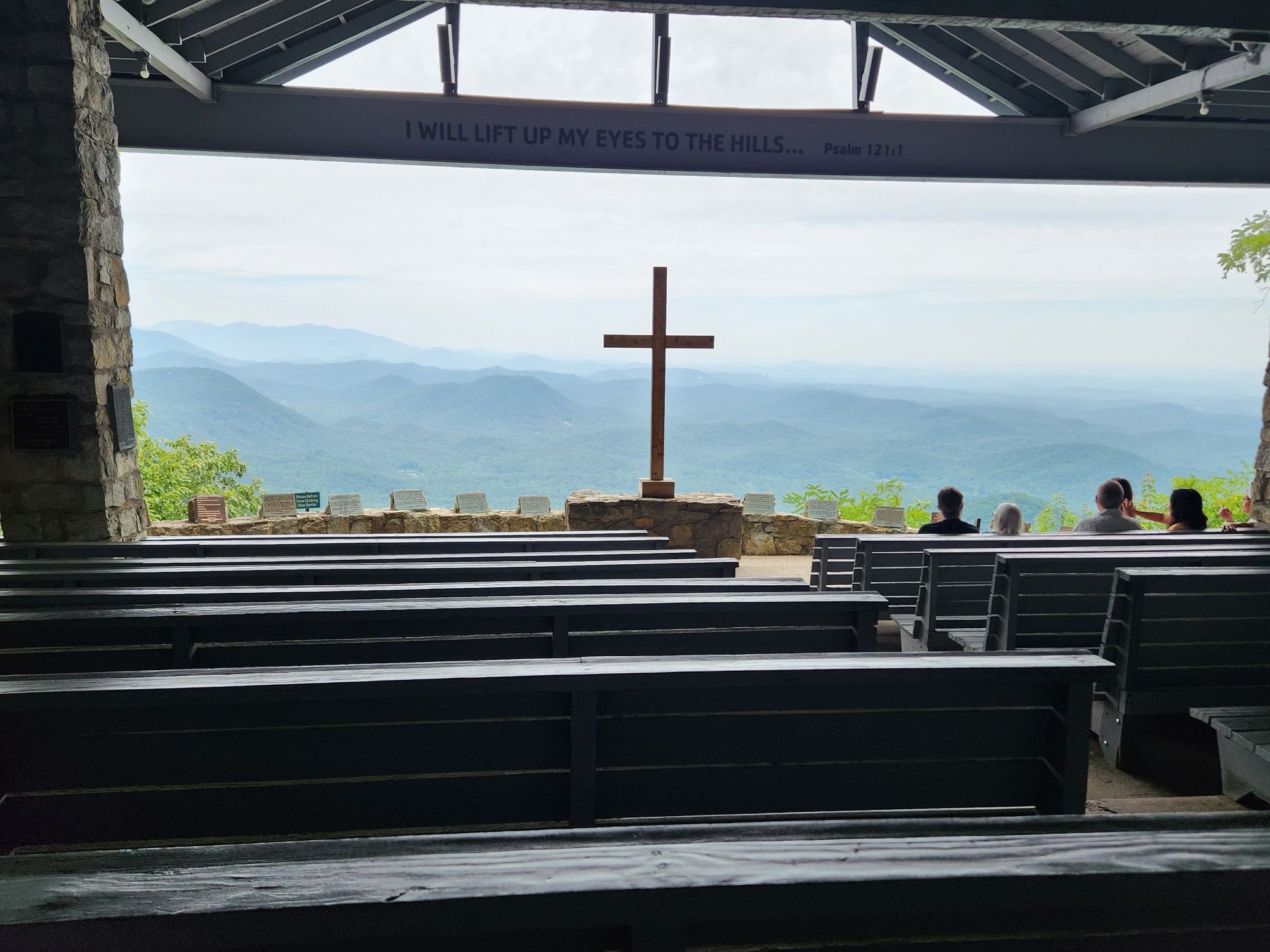
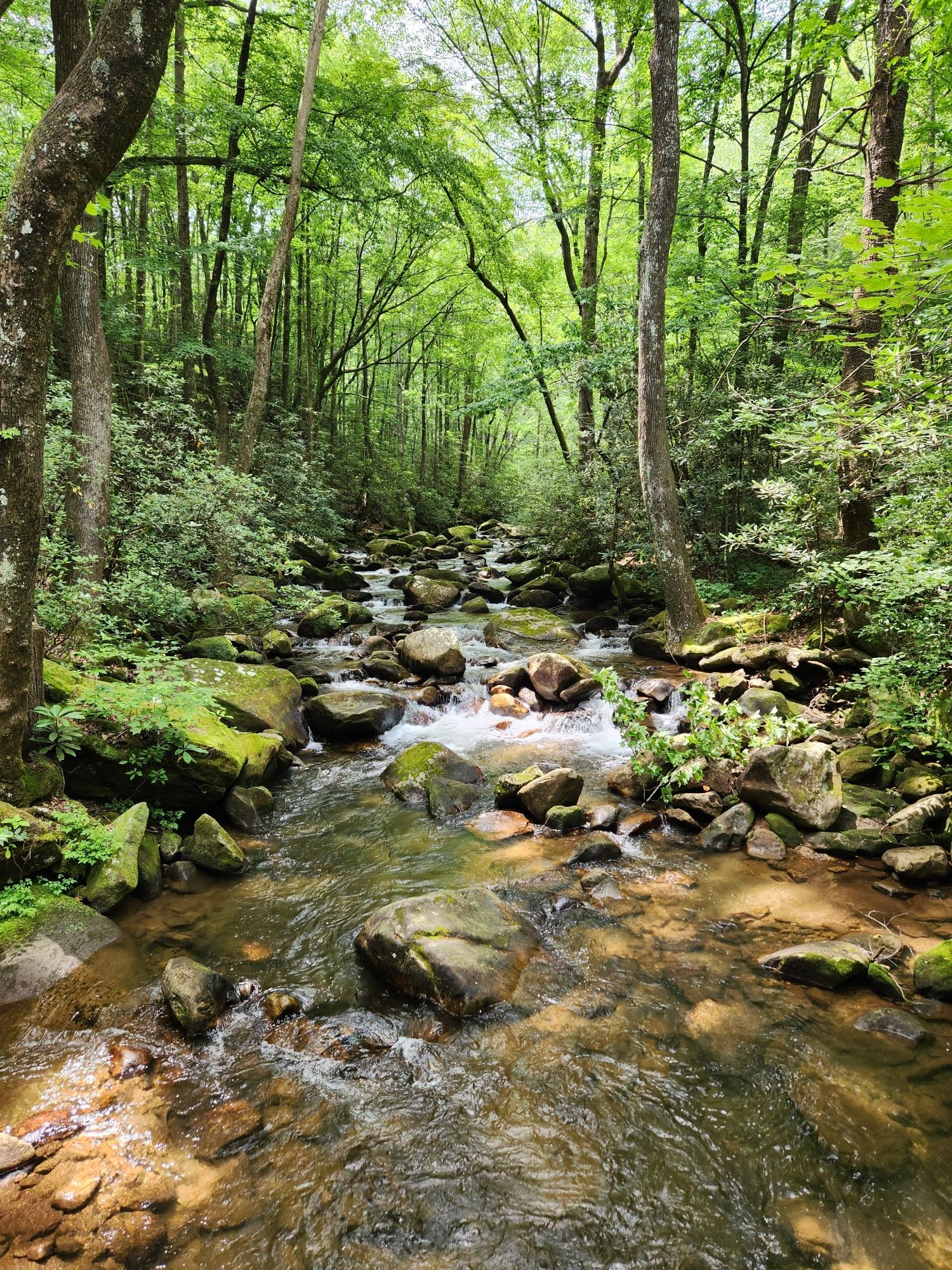
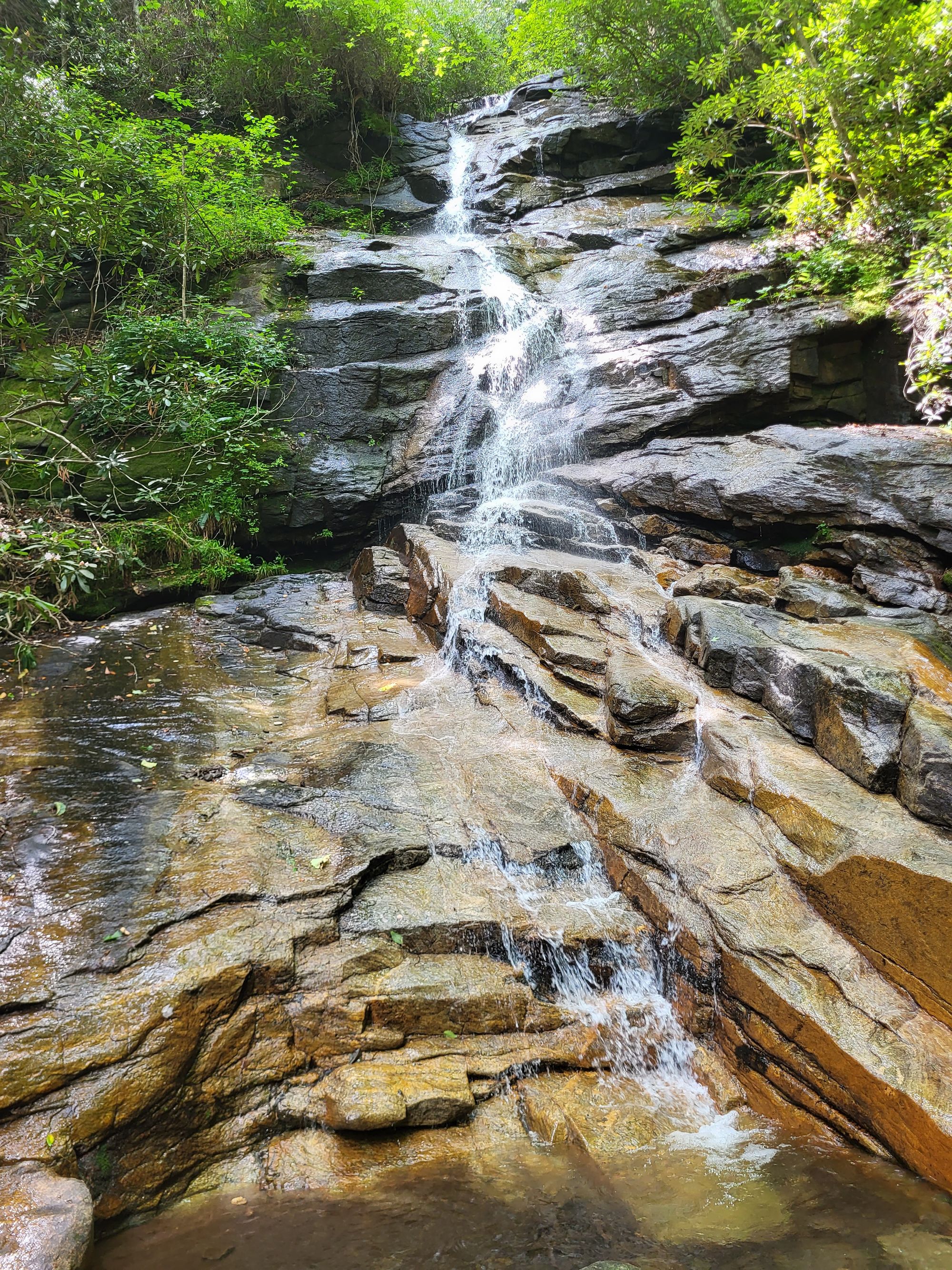
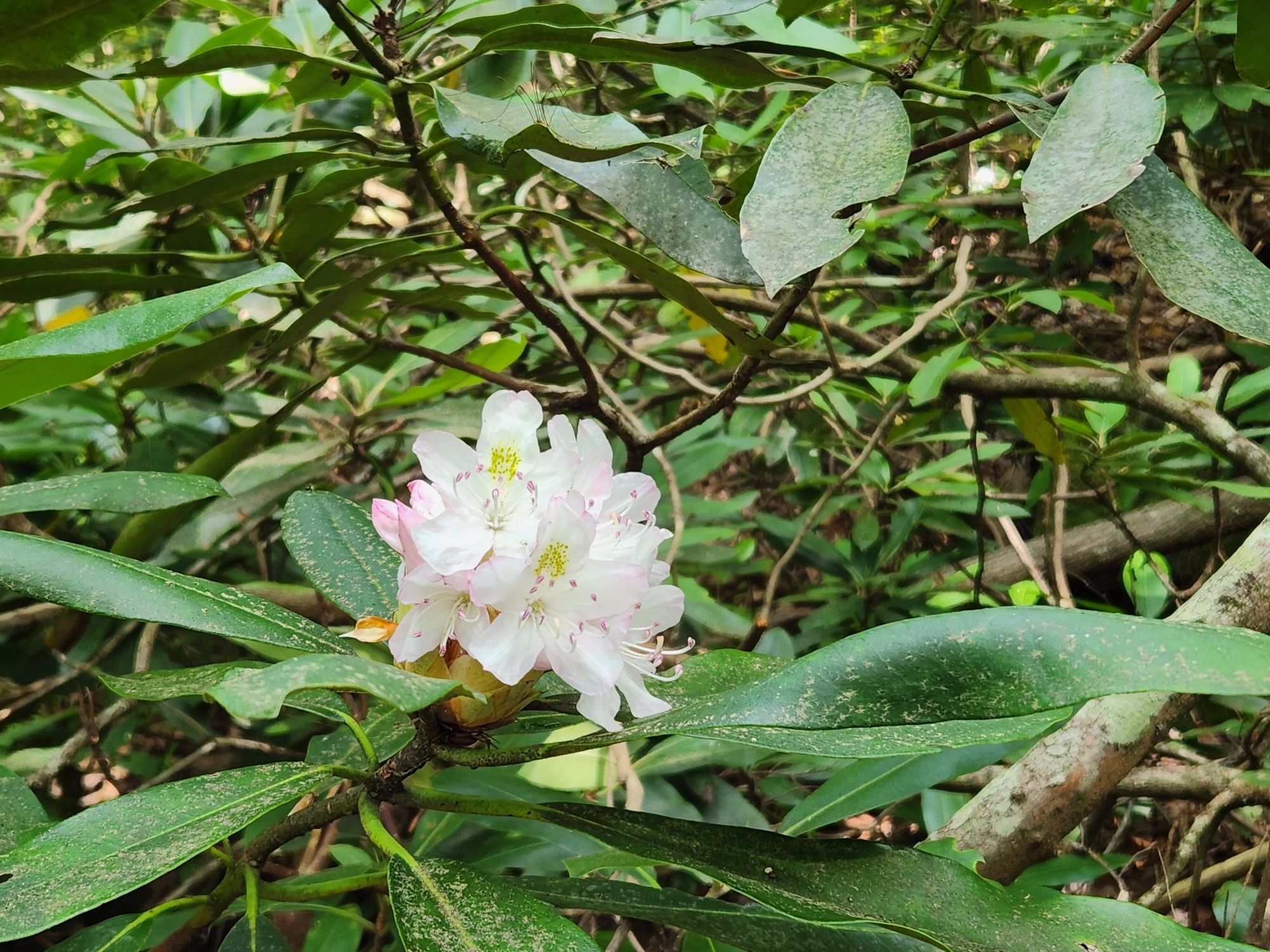

Pictures of Pretty Place at YMCA Camp Greenville, Jones Gap State Park, Rhododendron in bloom, Dixie Republic along the way
More (and much, much better) images of Pretty Place and Jones Gap.
The biggest surprise I had while doing this challenge was discovering this well-done resource about our SC Parks System: Remembering and Acknowledging the History of Segregation in South Carolina State Parks. Along with an article featuring current State Parks Director, Paul McCormack, outlining his organization's efforts to increase the diversity of the park staff, appeal to more diverse visitors, and about their partnership with Black Folks Camp Too.
-Related Links
If you have time for one more thing this week, read this essay by Latria Graham. We're Here. You Just Don't See Us. Outside calls it one of the best stories they've published. It definitely touched me. She's from South Carolina too!
Want to learn even more about how we all benefit from time spent in nature, give this article a read: Nurtured by Nature.
Still curious about other challenges and barriers to having a more inclusive outdoors? You might enjoy this article by Chrissy King.
WEEK 2 - People and Stories
Stories matter. Many stories matter. Stories have been used to dispossess and to malign. But stories can also be used to empower and to humanize. - Chimamanda Adichie, from her TED Talk, The Danger of a Single Story.
-Challenge
Go to the library, browse online, or buy several outdoor magazines and look at the articles, imagery, and ads.
-Questions/Reflections
- Whose stories are centered? Whose voices are heard? How/is diversity shown?
- Whom do you believe this publication is targeting?
- Did you learn anything about diversity & inclusion from the stories & imagery?
- What or who did you find that impressed you?
- Did you find anyone actively working to grow a more inclusive and equitable outdoor community? Is there a way you would want to support them? Even something as small as telling a friend about them can make a difference.
-My Experience
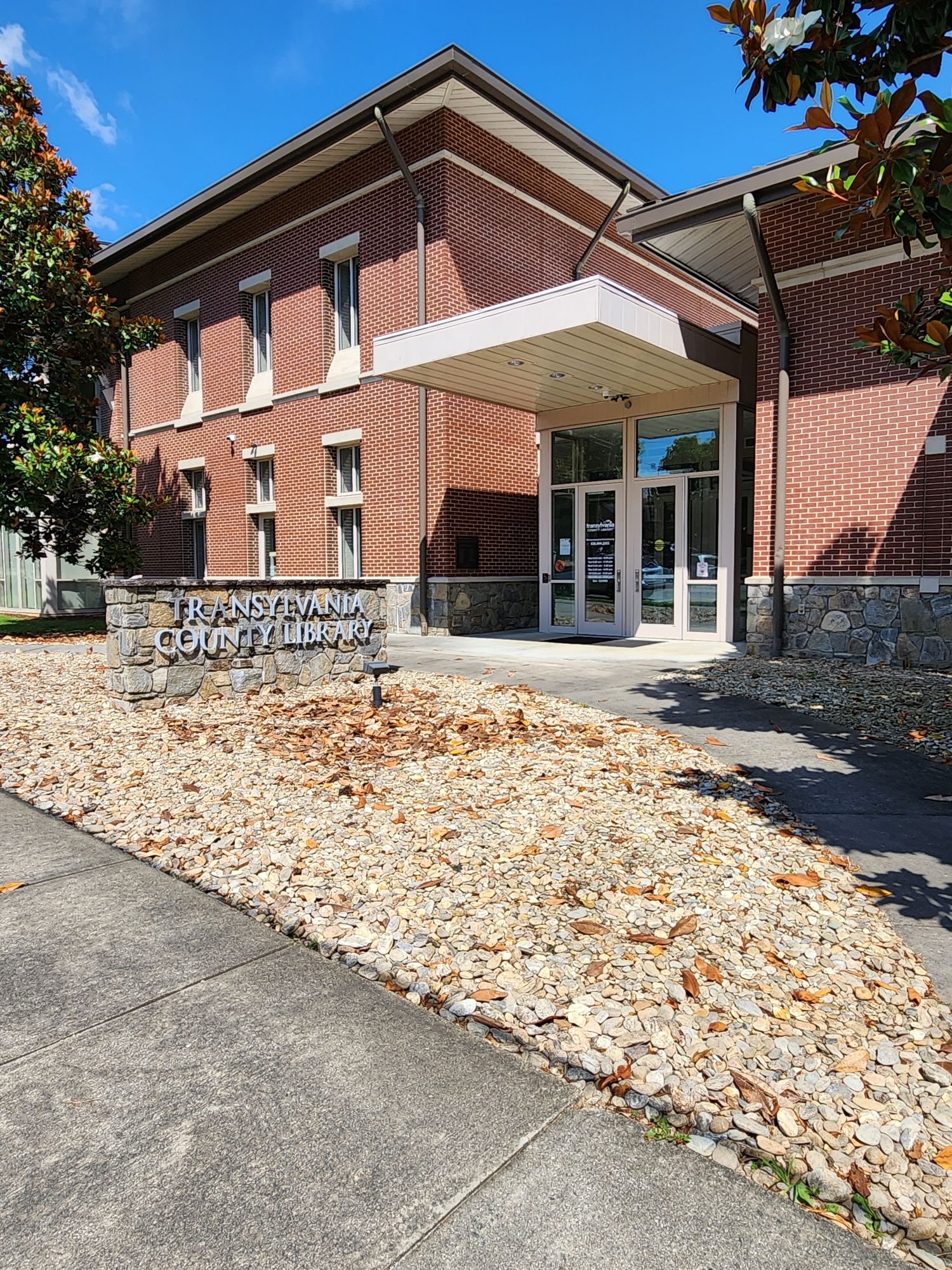
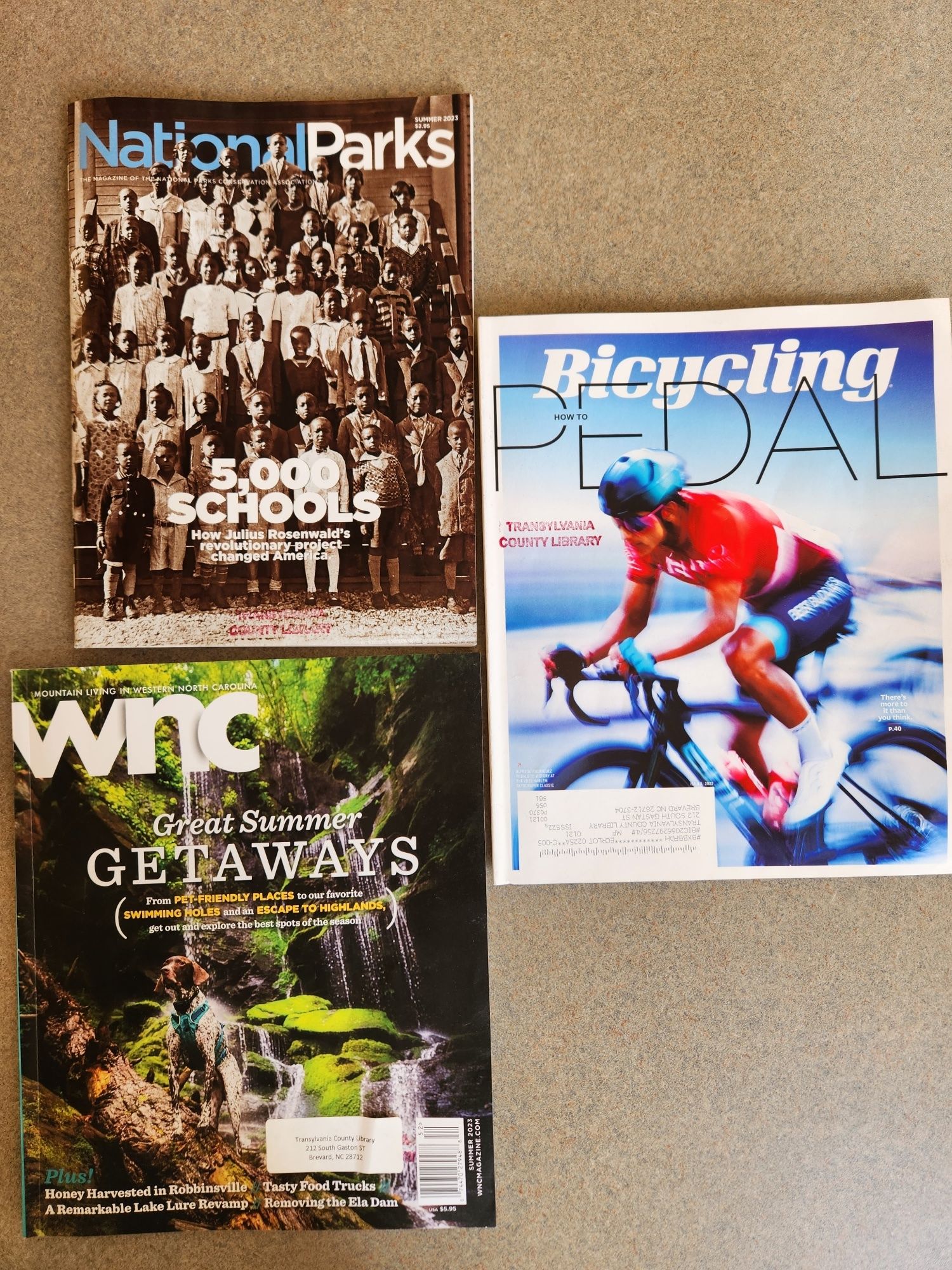
Entrance to Transylvania County Library + Images of the front of National Parks Magazine, WNC Great Summer Getaways + Bicycling magazine
From my challenge experience this week, I was most impressed by Outside. It wasn't just their flagship site Outsideonline.com that impressed me, although it did. I also spent a little time learning about their corporate values and approach to inclusion by studying their 2022 Impact Report. Have a look and see what you think.
-Related Links
At the risk of oversharing, 😁 here are links to a few things that I came across on my challenge this week.
5000 Schools and How Julius Rosenwald’s Revolutionary Project Changed America from the National Parks magazine.
Molly Cameron Never Wanted to Be Anyone But Herself, from Bicycling magazine.
In Florida, a Program Helps Children of Migrant Farmworkers Connect to the Outdoors from Sierraclub.org, the magazine of the Sierra Club.
Followed in Plain Site, by Shilletha Curtis from Backpackinglight.comm
Outdoor Industry-wide diversity and inclusion at the In Solidarity Project.
Sometimes learning a little about a publication's target audience is worth a detour, as it was for me to learn a few shocking stats about cycling and also get a little perspective on mountain biking and identity from David Robles.
Follow-up: Last week, I mentioned an article by Latria Graham that was published on Outdsideonline.com: We're Here. You Just Don't See Us. Here's a link to an interview with Latria and also a second article: Out Here, No One Can Hear You Scream. You can visit her website to view more of her writing. The first sentence on her website says, "Social issues deserve subplots." So true.
-Sneak Peek
Kristen Walker and Diamon Clark have paired together with the Sierra Club on a mission to showcase Black joy and inclusivity in the National Parks as part of the Sierra Club's Outdoors for All Initiative. They're calling their series, Our Parks Too. They recently visited Congaree National Park, which happens to be where I’m going next week. Get a sneak peek by watching their video about Congaree National Park.
-Speak Up
If you want to get a jump on the Speak Up part of our Challenge, here's an advocacy opportunity through the Sierra Club to use your voice to support the Outdoors for All Act that is before Congress.
WEEK 3 - See the Past Differently, See the Place Differently
History cannot give us a program for the future, but it can give us a fuller understanding of ourselves, and of our common humanity, so that we can better face the future. -Robert Penn Warren
-Challenge
Select a public outdoor place, preferably somewhere in your community or close by, your closest National Park, a local park, or any public space. Visit if possible. Learn more about the place and its history. This challenge is based on the premise that if you see the past differently, you’ll see the place differently.
-Questions/Reflections
- Who was first in this place? Who might have been displaced and by whom? Open yourself to alternative narratives of history and of place when you find them. Imagine being one of the oldest trees in that location. What might that tree have seen over its lifetime?
- Look at how this place is represented today, its name, its markers, plaques, commemorations, trail names, and names of geographic features. Are there presentations, videos, websites, and brochures? Whose story do they represent, whose voice do you hear?
- How does what you uncovered and learned about the past match what is currently presented about this place? What and who is included? What and who is missing?
- What does this place mean to you, and what might it have meant to others in the past? What could it mean in the future? How could you imagine this place contributing to a more inclusive world?
-My Experience
It is a lesson in intentionality, discovery, and humility to go to a place you've been before and choose to see it anew. To explore its past, not just consume what is presented, and then to be open to what you see and what the place and its history have to teach you.
Meeting a few of Congaree's champion trees and learning more about what those trees may have seen in their lifespan, has changed forever how I think about Congaree and about my home state. Like a double exposure or layered image, my thoughts of Congaree now will always carry images of what I've learned, of the bloody Yemassee Wars, of the Maroon Communities, and of those who have loved this forest for generations.
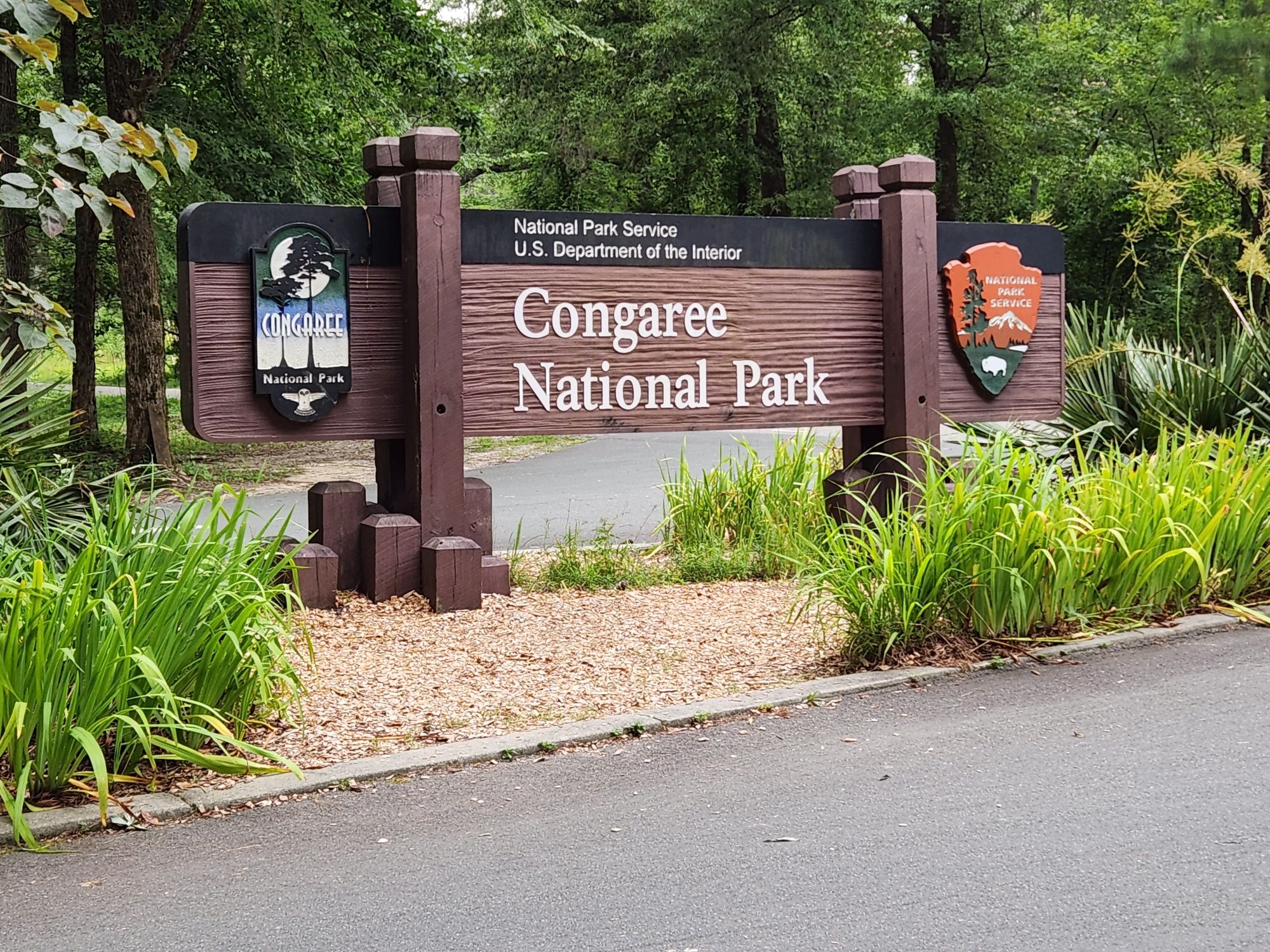
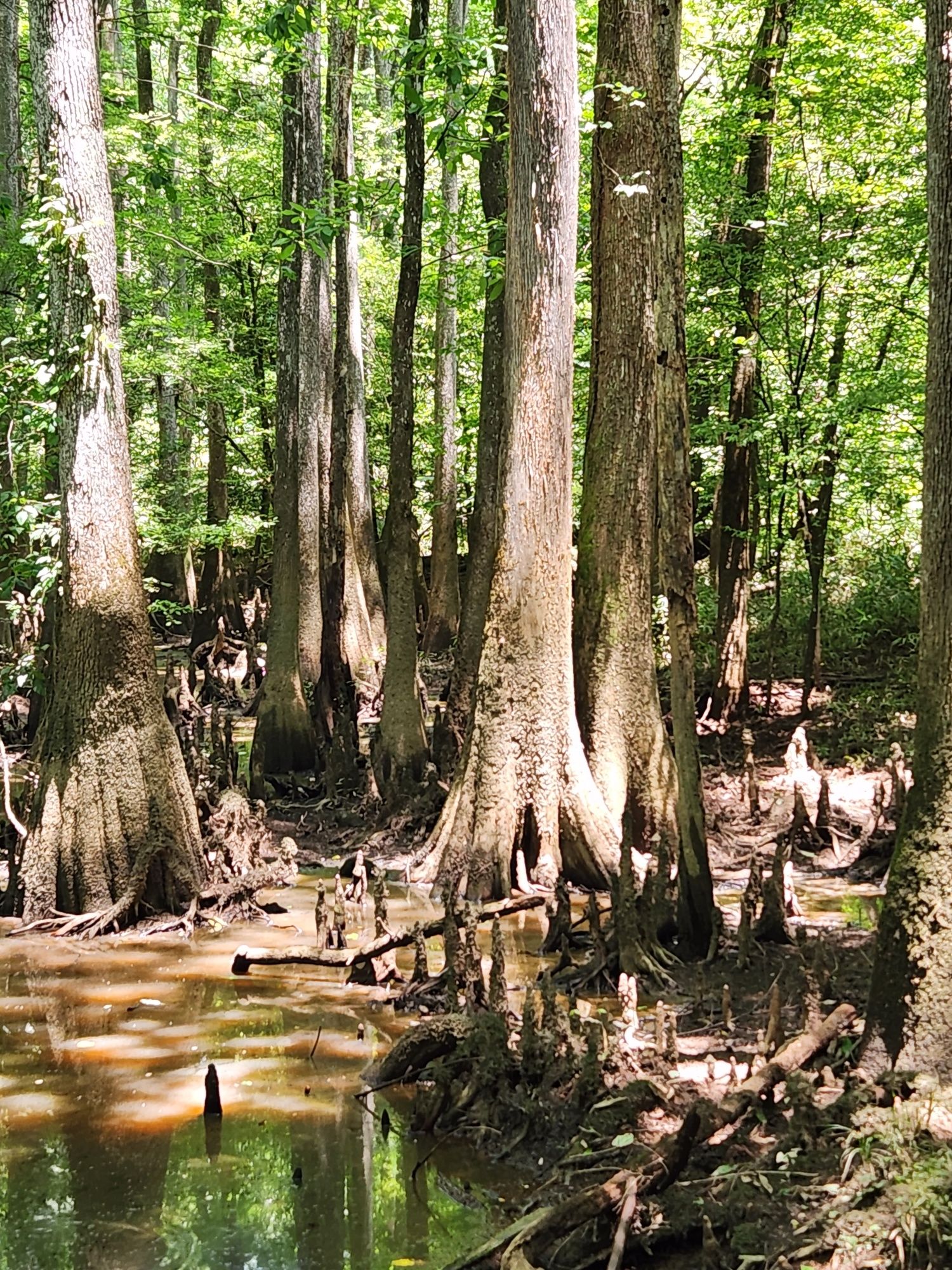
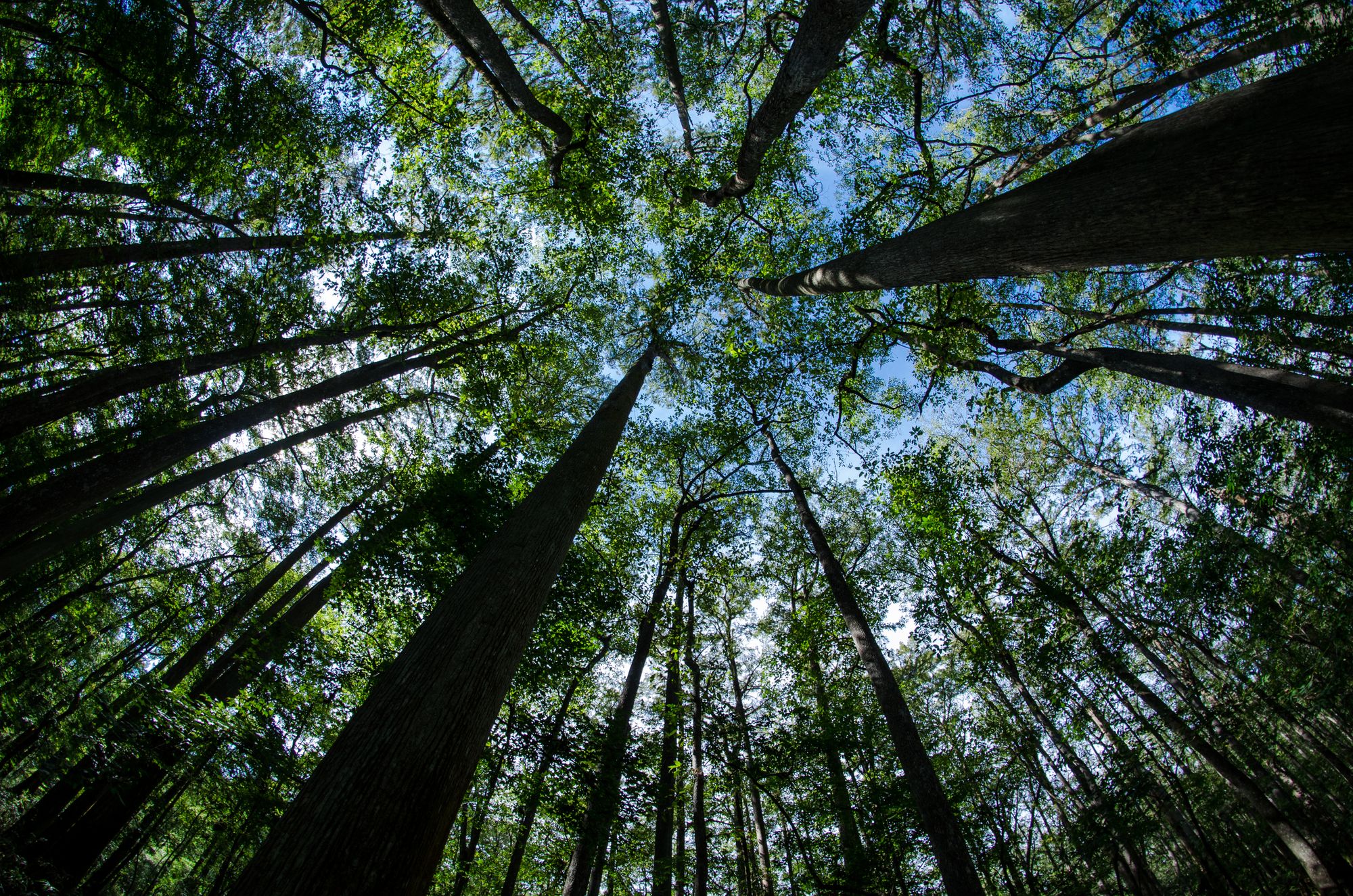
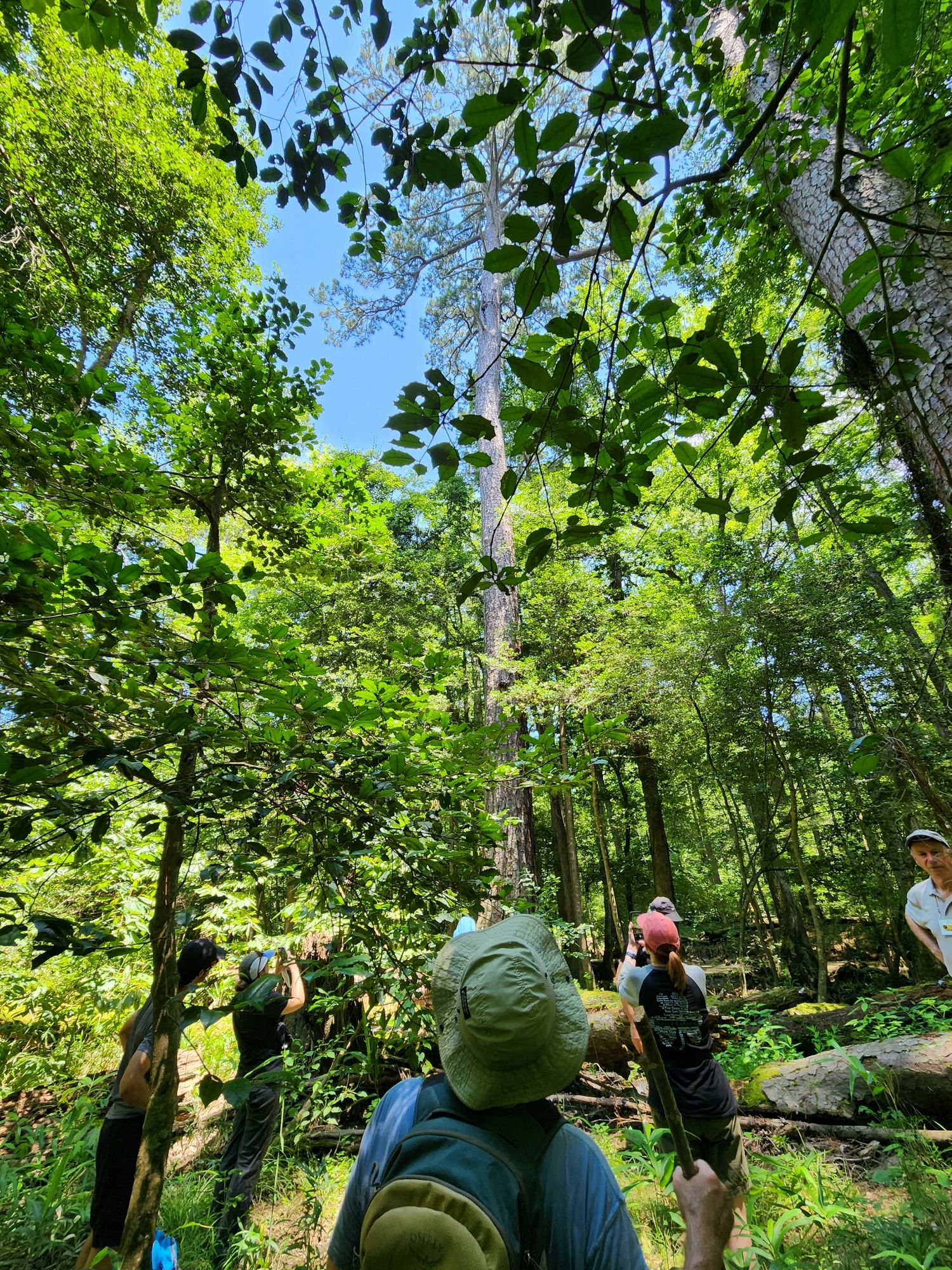
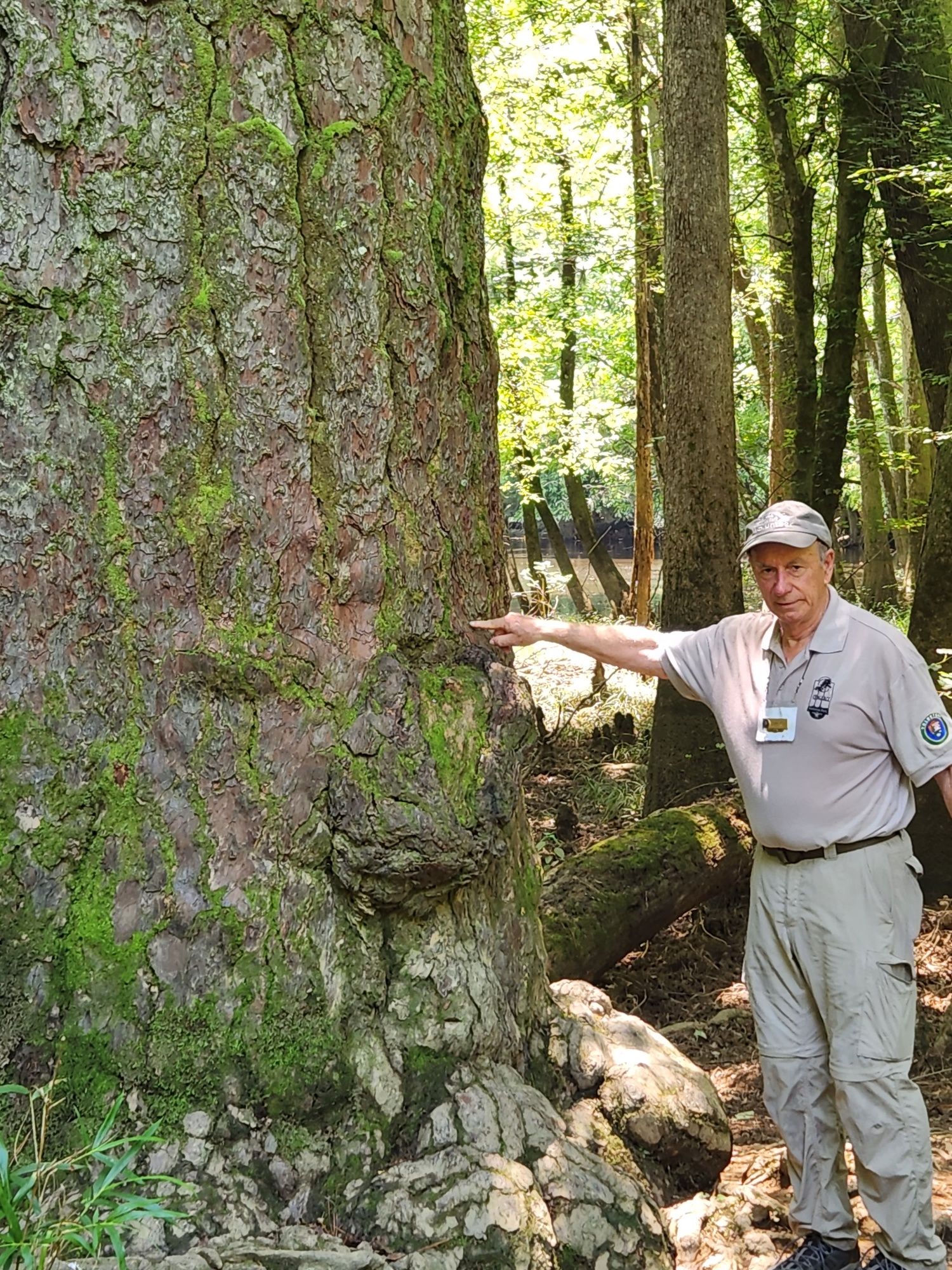
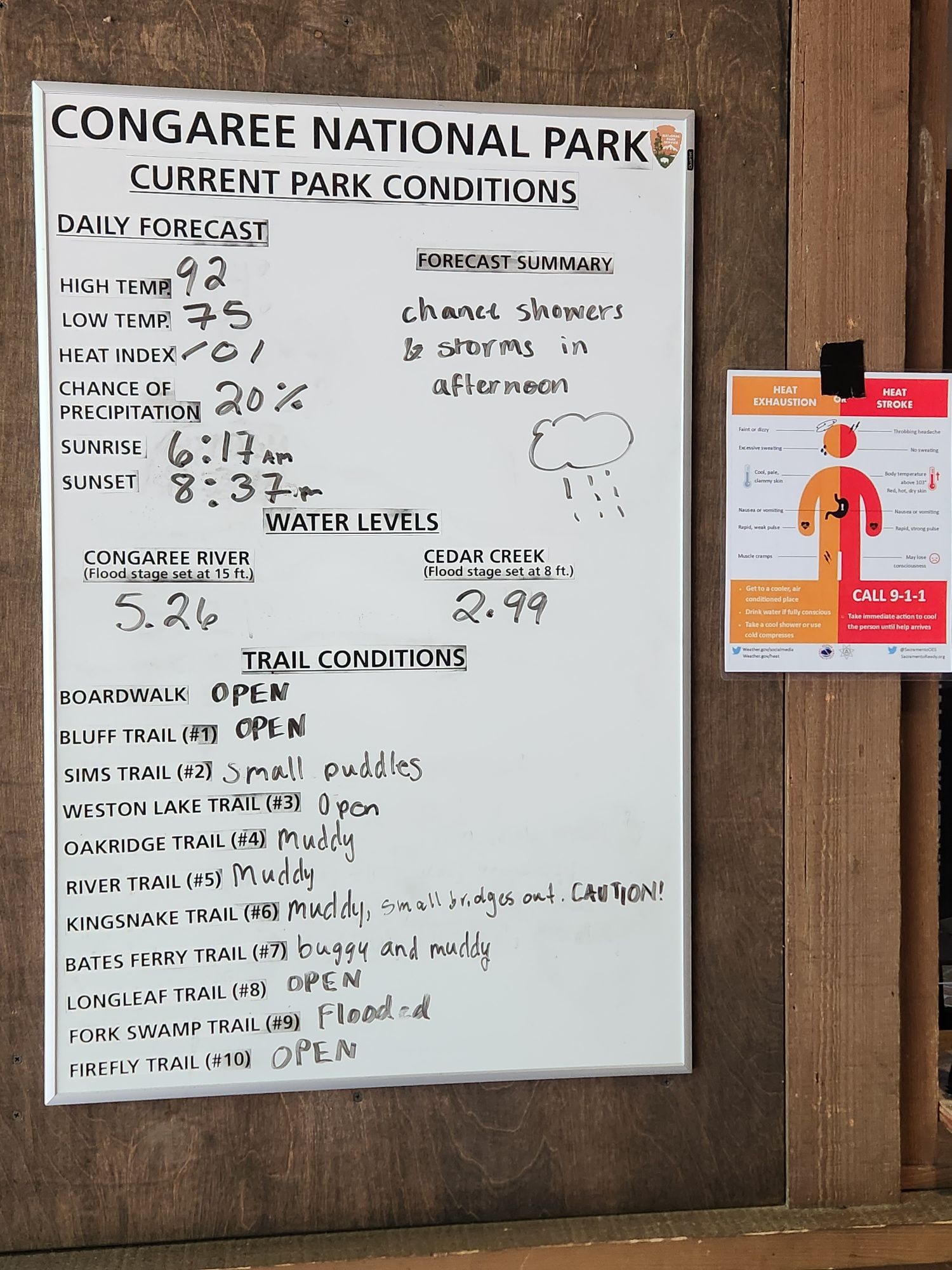
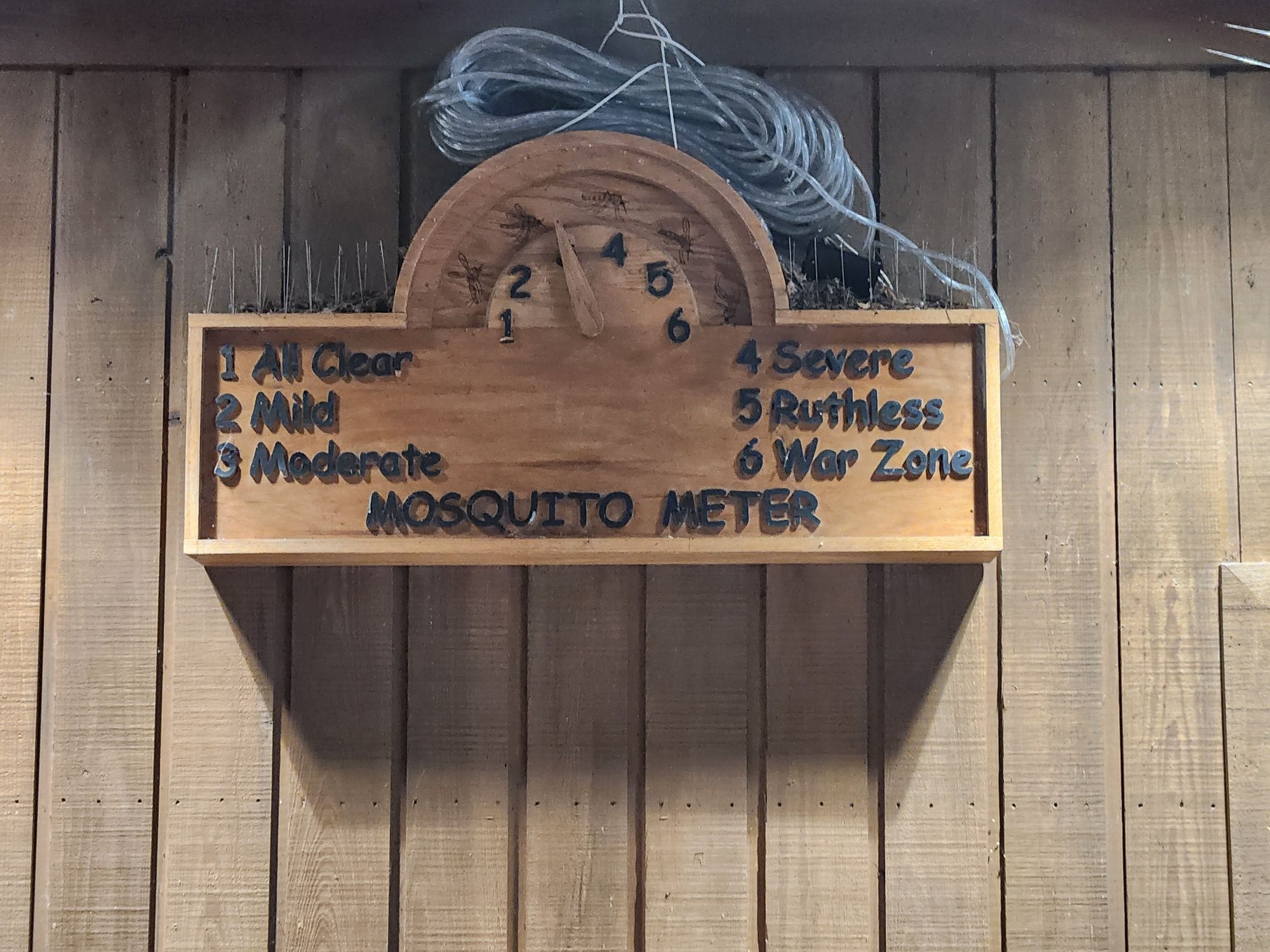
Entrance to Congaree National Park + scene of cypress trees with cypress knees + Looking up at tops of trees + hiking group looking up at tall pine + John Cely + whiteboard of park conditions for the day + current mosquito meter
-Related Links
If Congaree intrigues you, let me recommend the park's beautiful 19 min video of Congaree National Park. About 6:30 you'll get to meet John Cely.
If you have kids along for these challenges, you'll really love this Junior Ranger Brochure for Congaree National Park. It has a great timeline of the history of Congaree. You could help them create a timeline like this for their favorite place.
Learn more about Congaree National Park.
Learn more about the champion trees of Congaree with This article.
Friends of Congaree Swamp and John Cely's Journal.
A few of the resources I reviewed in learning about the history of the area:
- Deeply Rooted: The Story of Congaree National Park
- A Place of Nature and Culture: The Founding of Congaree National Park, South Carolina
- Nature Preserves Sometimes Tell Us About Human History
-Recommended Listening
If you enjoy this outdoor challenge, learning about place, and national parks you're really going to love a podcast I've been listening to called Field Trip.
The Washington Post’s Lillian Cunningham journeys through the messy past and uncertain future of America’s national parks. In trips through five iconic landscapes, she ventures off the marked trail and beyond the parks’ borders to better understand the most urgent stories playing out in these places today. Along the way, she meets the people fighting to help these parks evolve – and survive.
WEEK 4 - Wander and Wonder
I chose these two quotes from Dacher Keltner’s book, Awe: The New Science of Everyday Wonder and How It Can Transform Your Life, to help introduce, and frame this week’s challenge.
Awe is the feeling of being in the presence of something vast that transcends your current understanding of the world.
Wonder, the mental state of openness, questioning, curiosity, and embracing mystery, arises out of experiences of awe.
-Challenge
The underlying premise for this week's challenge is that if we simply practice mindfulness, open our hearts, and set an intention of inclusion, there is a positive effect on us and, consequently, on those with whom we interact. Being outdoors in nature is a perfect place to practice mindfulness, and wonder can help us become more open.
This week's challenge has four simple but powerful steps:
1. Get outside in nature.
2. Set a personal intention that you believe will help you or your community on your journey toward inclusion and equity. Perhaps to be less judgmental, or to be more accepting of others who are different from you in some way, or to forgive yourself or someone else for a past transgression. You will know what it is you need in the moment. It is okay to start small.
3. Open your heart and be ready to receive messages that come your way.
4. Wander, wonder, and let the natural world speak to you.
You can wander and wonder on a forest path you know by heart, by walking a local labyrinth, walking around your backyard, or even in a parking lot. You can wander and wonder during the day, at sunrise, sunset, underneath the stars, or with a full moon to illuminate your world. You can wander and wonder alone or with a guide. You can find wonder in something tiny, human-sized, or immense. It is all possible.
Our Marketing Coordinator, Kayla, shared photos and wonder experiences of looking at the vast night sky and a moment of reflection in a parking lot. I’ve also included images from my experience walking a local labyrinth, images from my Sacred Saunter through the forest with Dr. Mattie Decker, a Certified Nature and Forest Therapy Guide, along with images from quiet wooded paths.
When you've completed this challenge, I’d love to hear a little about what inspired you. Feel free to reach out or post in the comments. (You'll need to sign in to post)
-My Experience
Listen as I share about my Sacred Saunter in the mountains and my experience of mindfully walking a local labyrinth.
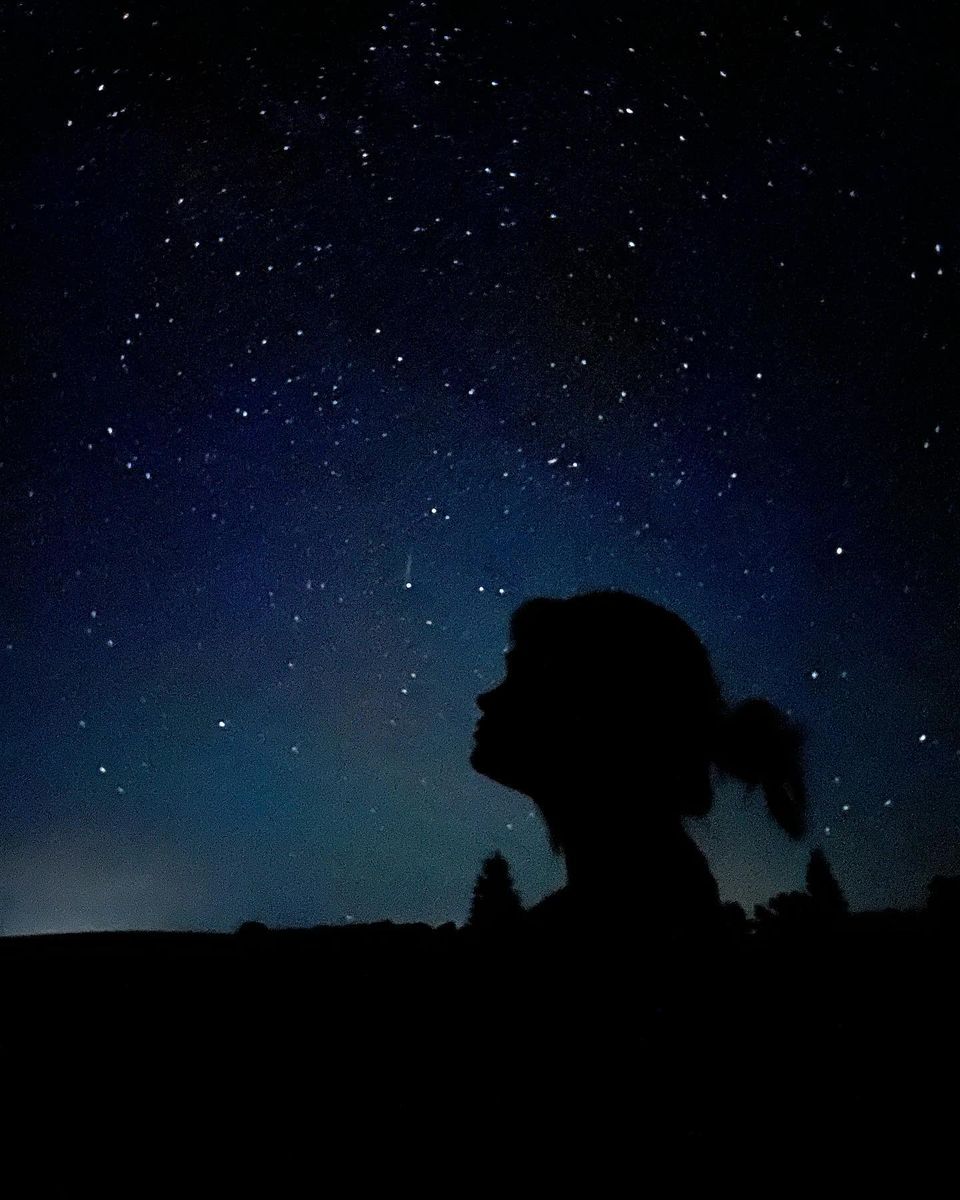
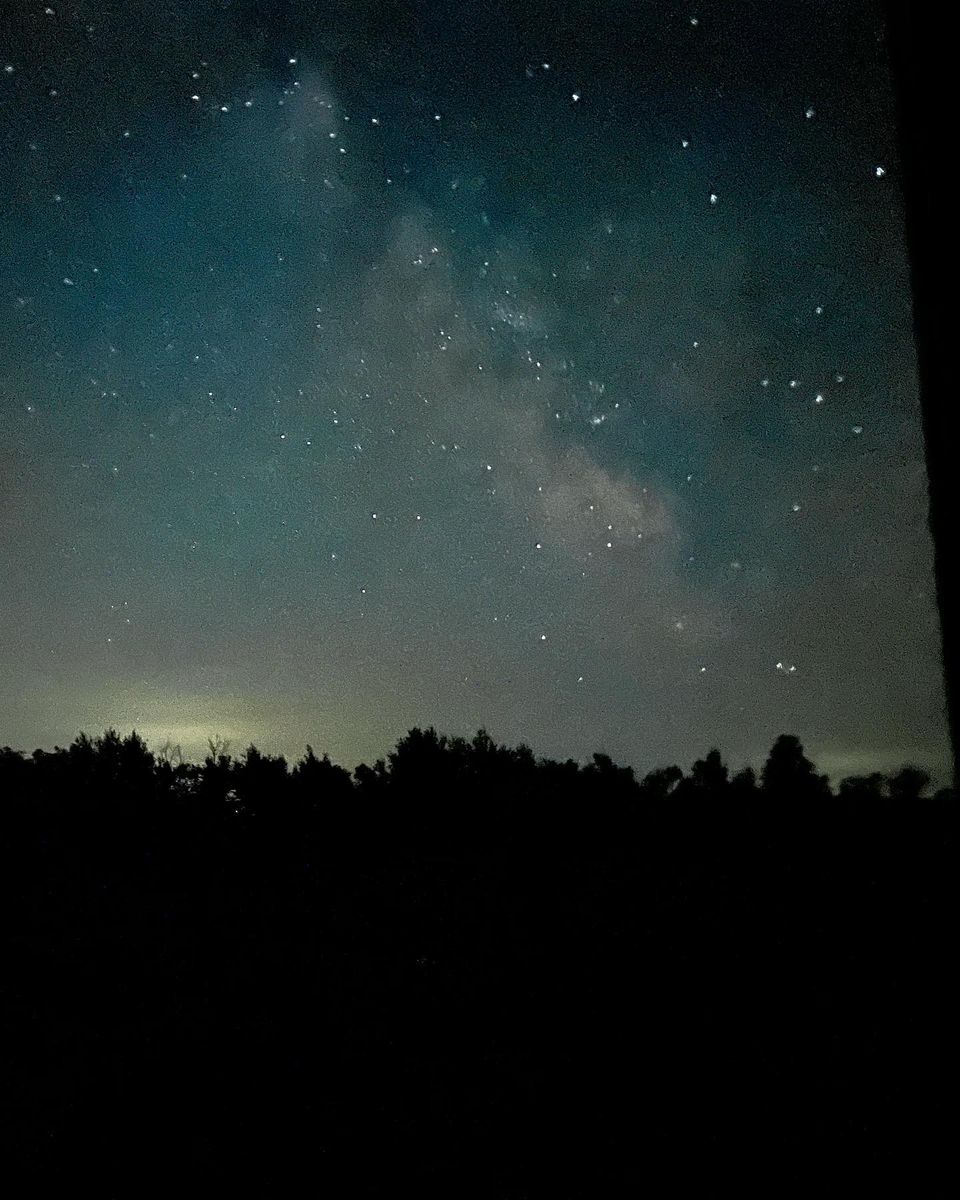
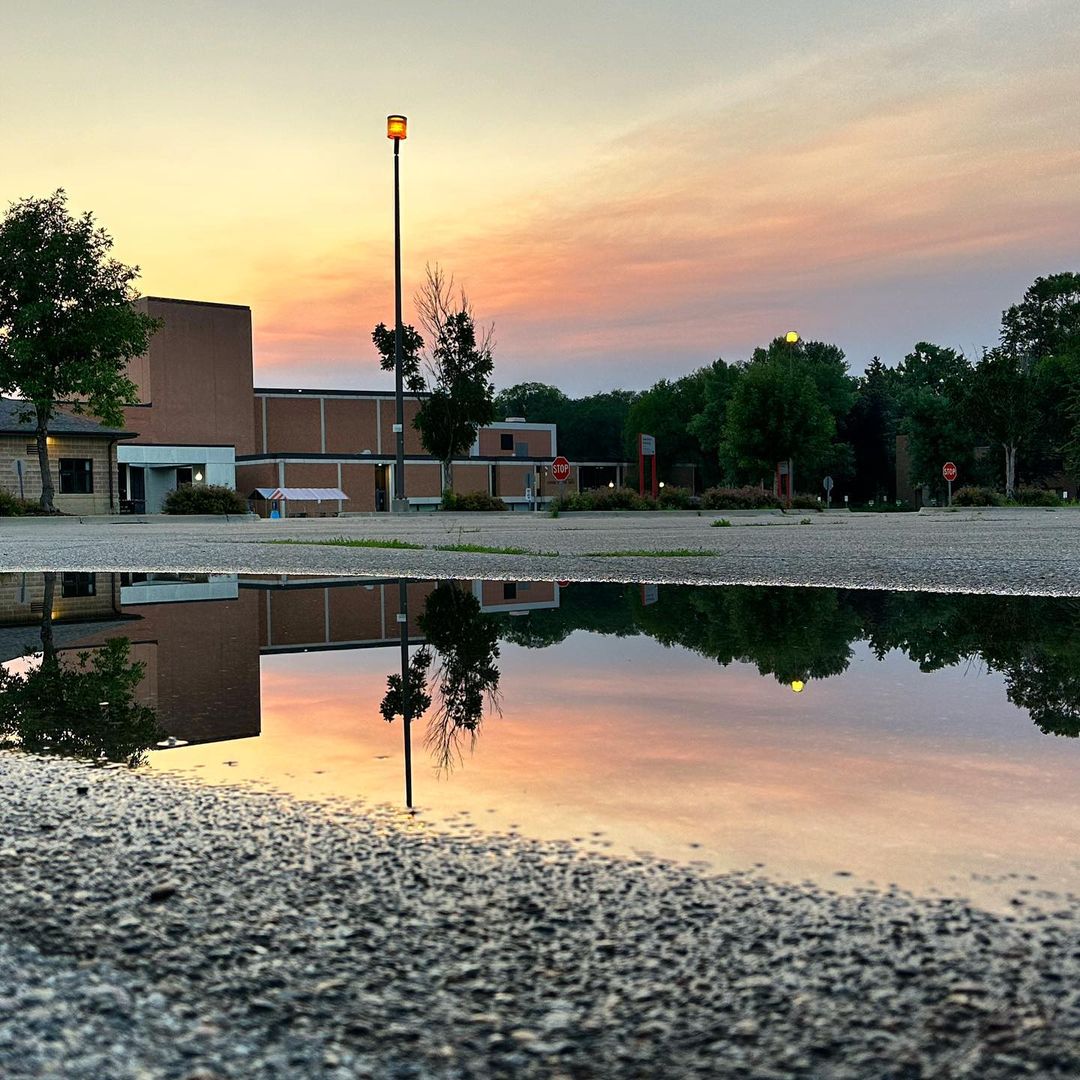
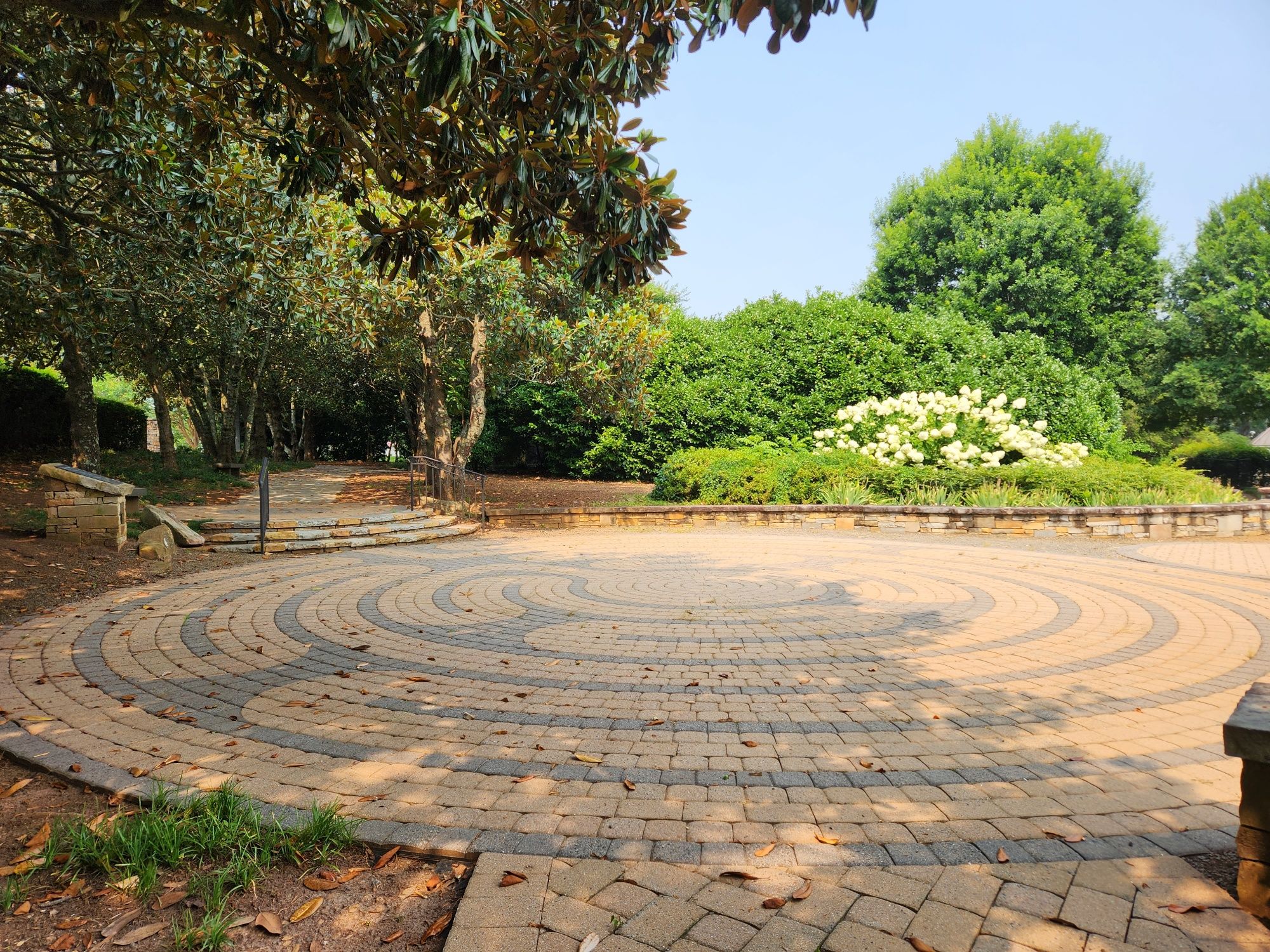
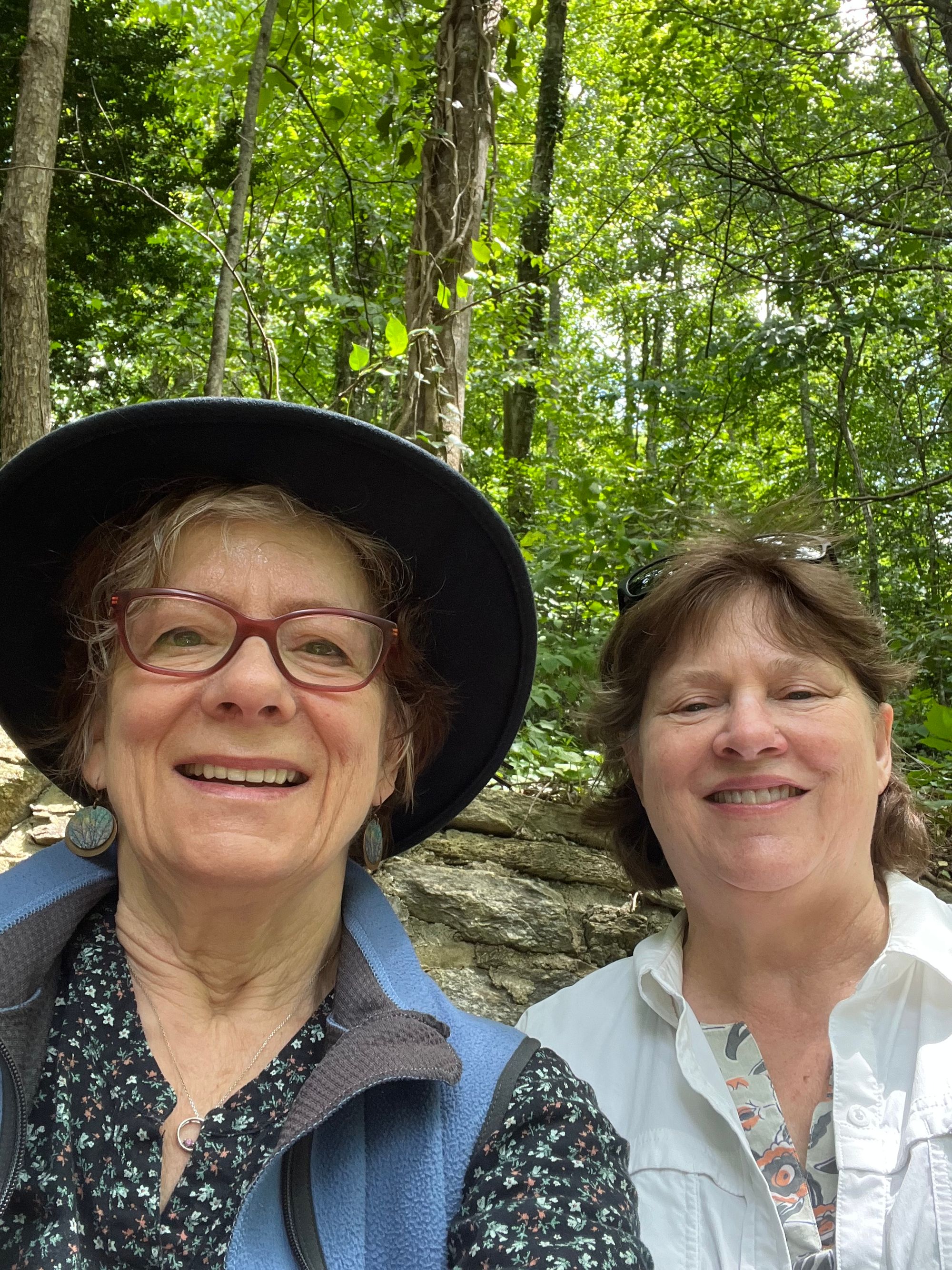
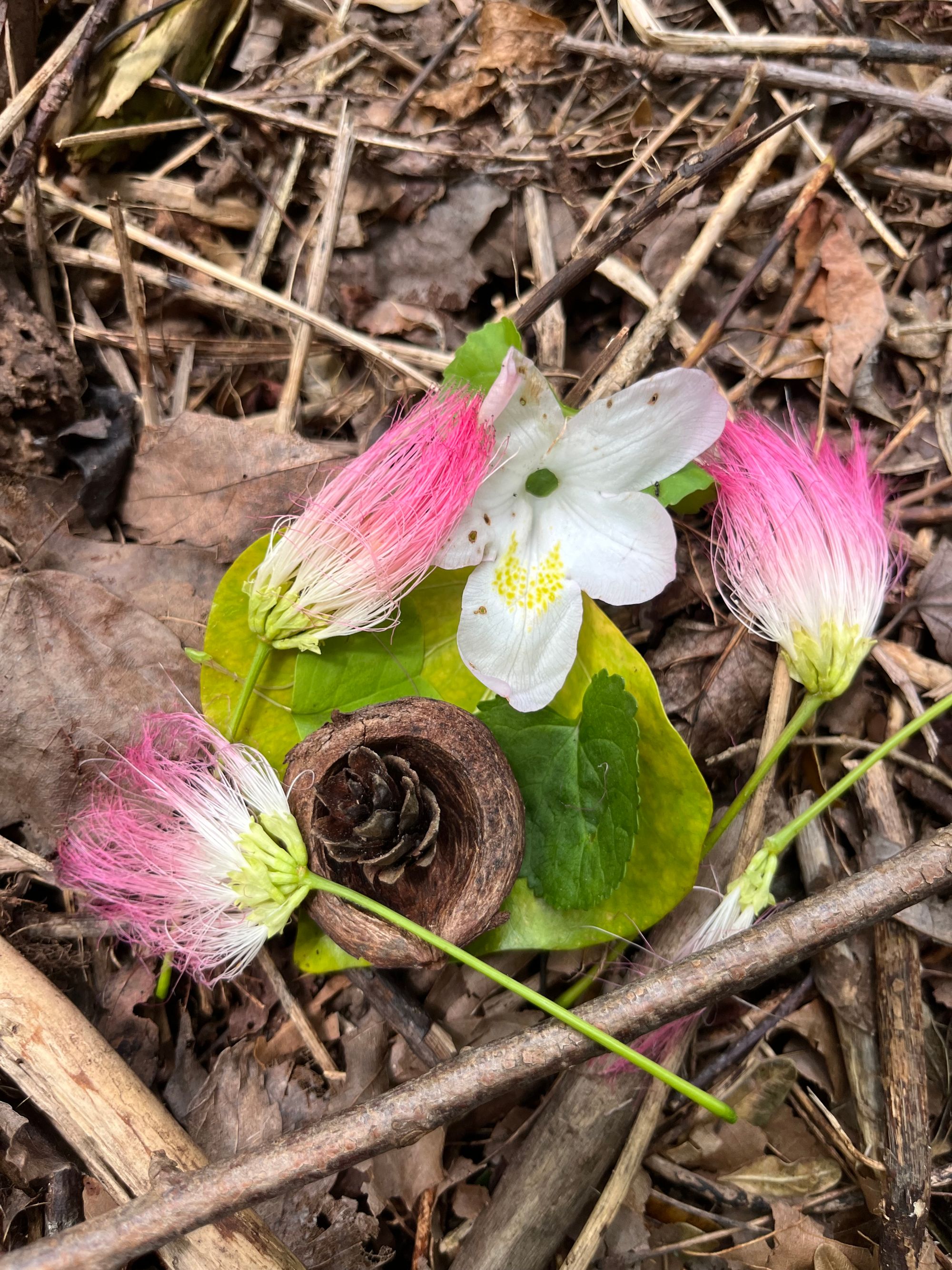
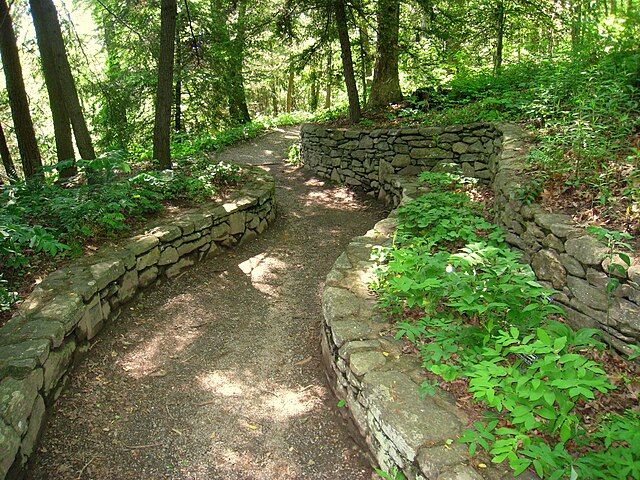
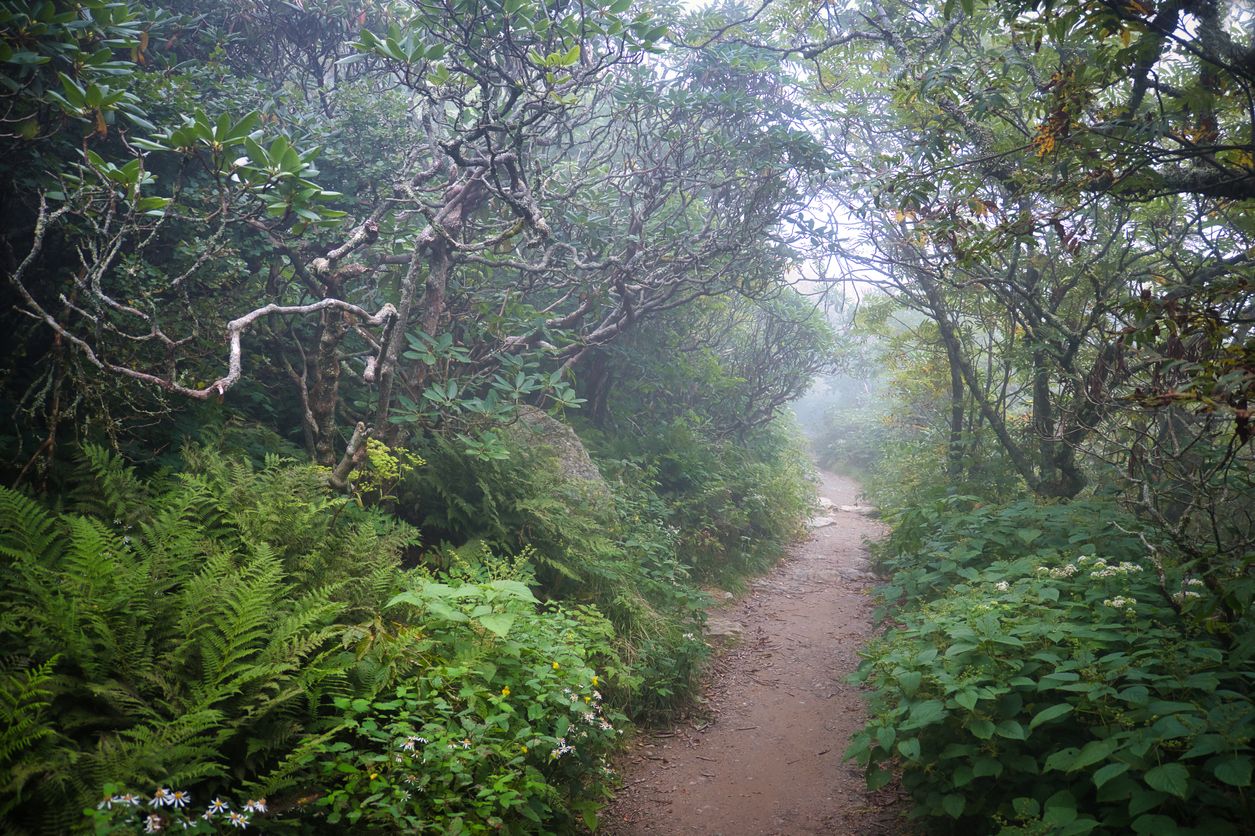
Kayla's Images from Minnesota - the wondrous night sky and a quiet moment of reflection + Labyrinth at First Baptist Church Greenville, SC + Mattie, my Sacred Saunter guide + Mattie's gifts from the Saunter + a path at Asheville Botanical Gardens + Path at Craggy Gardens near Blue Ridge Parkway
-Related Links
In preparing this week's challenge, I was inspired by a story I read in Jessica Nordell's book, The End of Bias: A Beginning. She relayed a story about the successful use of mindfulness to help police officers respond to the public with more compassion and awareness, even helping them to counteract fear, anger, and ego. Nordell tells us that:
Internal practices of mindfulness and compassion can be tools not just for police but for all of us working to transcend our own biases.
Learn more about Richard Goerling and Mindful Policing at the Mindful Badge.
This article suggests that meditation is the key to inclusion.
For those who might need a little more evidence, here's a link to an interesting study: Mindfulness Meditation Activates Altruism.
If you're located near Western North Carolina and want a forest bathing or sacred saunter experience, visit Dr. Mattie Decker's site, Hidasta.com. She practices in Bat Cave, North Carolina at the Transfiguration Preserve and hosts events in coordination with Conserving Carolina.
Not nearby? Visit the Association of Nature and Forest Therapy to learn more or find a guide or experience near you.
If you love labyrinths, as I do, but are not sure where to find one, check out this handy labyrinth locator.
Mattie shared Mary Oliver's poem, When I Am Among the Trees at the conclusion of our saunter. I thought you might enjoy it as well.
If you wish to go even deeper into this challenge by using guided meditation, here are a couple of options to consider:
Loving Kindness Meditation - 11 min
A Guided Meditation to Open Your Heart Chakra and Connect to Loving Kindness - 23 min
Week 5 - Empathy is Key
EMPATHY is the secret sauce to effective equity and inclusion. - Christina Sackeyfio
-Challenge
See the outdoors through someone else's eyes.
Reach out to someone you know who might experience the outdoors differently from you, or face barriers to access the outdoors. Listen to their story and learn about their experience.
Questions/Reflections:
- What has been their experience being active, accessing public spaces, and getting outdoors?
- What barriers have they faced, or still face? How did they overcome those barriers? What changes do they wish to see to make the outdoors more inclusive for themselves and others?
- Some thoughts: It is best to choose someone you already know and who you feel would be comfortable sharing their story. Be respectfully curious. This is not about your challenge or your story, but about deeply listening to their story. Make your conversation an advice-free zone. It is not about problem-solving or saving, just listening.
Feel free to reach out or comment about how this challenge has made you see things differently. (You'll need to sign in to comment)
-My Experience
For this week's challenge, I spoke with Chris Sparrow. Chris is an adaptive athlete and disability advocate whom I have known now for a few years. Chris has helped me better see both the benefits and barriers those with a disability face when getting outdoors. He has also forever changed my view of what's possible in adaptive sports. I had no idea adaptive mountain biking and adaptive golf even existed. I'm grateful Chris was so open and willing to share his story. Not to mention the great pictures!
In the audio for my week 5 experience, I've included a short excerpt from my interview with Chris. To hear my entire conversation with Chris, click on the 2nd link, which will take you to the full interview along with its transcript and show notes.







Images of Chris engaging in some of his favorite outdoor sports: Golf, Snow Skiing, Mountain biking & competition, Kayaking
-Additional Thoughts
Empathy is feeling WITH people. - Dr. Brené Brown
Want to become a better listener? In her article, How to Become an Empathetic Listener, Kaitlyn Skelly suggests these 4 steps:
- Understand their perspective: Start by asking about how they are doing or feeling.
- Be curious: Be intentional about asking open-ended questions so we don’t impose our ideas on others, but are listening to their ideas instead.
- Identify emotions: Listen and observe how the person responds to our questions and focus on the emotions they express through words and body language.
- Summarize: Confirm that you’ve heard what they’re saying, by summarizing what they’ve said, and asking, “Do I have that right?”
Week 6 - Discover the Inclusive Outdoors in Your Community

Celebrate what you want to see more of. - Tom Peters
I see no conflict between celebrating this progress and continuing to fight for more. - Hans Rosling
-Challenge
Uncover what is already being done in your community to build a more inclusive outdoors and who’s doing it.
-Questions/Reflections
- Take a moment and look around you. Where do you see positive signs, even small ones, that the outdoors in your community are becoming more accessible, equitable, and inclusive?
- Who are the people who are engaged in and committed to this work?
- As you consider the work they are doing, is there a way you can get to know them a little better, recognize and thank them for their work, and maybe even help or support them in some way?
In our comments, feel free to lift up the progress you see and give a shout out for anyone you'd like to recognize. (You'll need to sign in to comment)
-My Experience
Here's my shout out for this week's challenge:
- I'm grateful for the commitment to making our S.C. State Parks more accessible and inclusive and the work being done by Director, Paul McCormack and his team. I also want to thank Paul for his generous response to my query and joining us for a podcast episode.
- I'm happy that so many of my city's parks are accessible via public transit and want to thank Tara Eaker, Director of the Department of Parks, Recreation and Tourism for the City of Greenville, SC and also the city's Parks Operations Coordinator, Terrie McCracken for their thoughtful response to my queries.
Hear a little more about what I learned in this week's challenge by listening to my Week 6 Experience.
Hear more about inclusion and equity at SC State Parks by listening to my podcast interview with Paul McCormack.
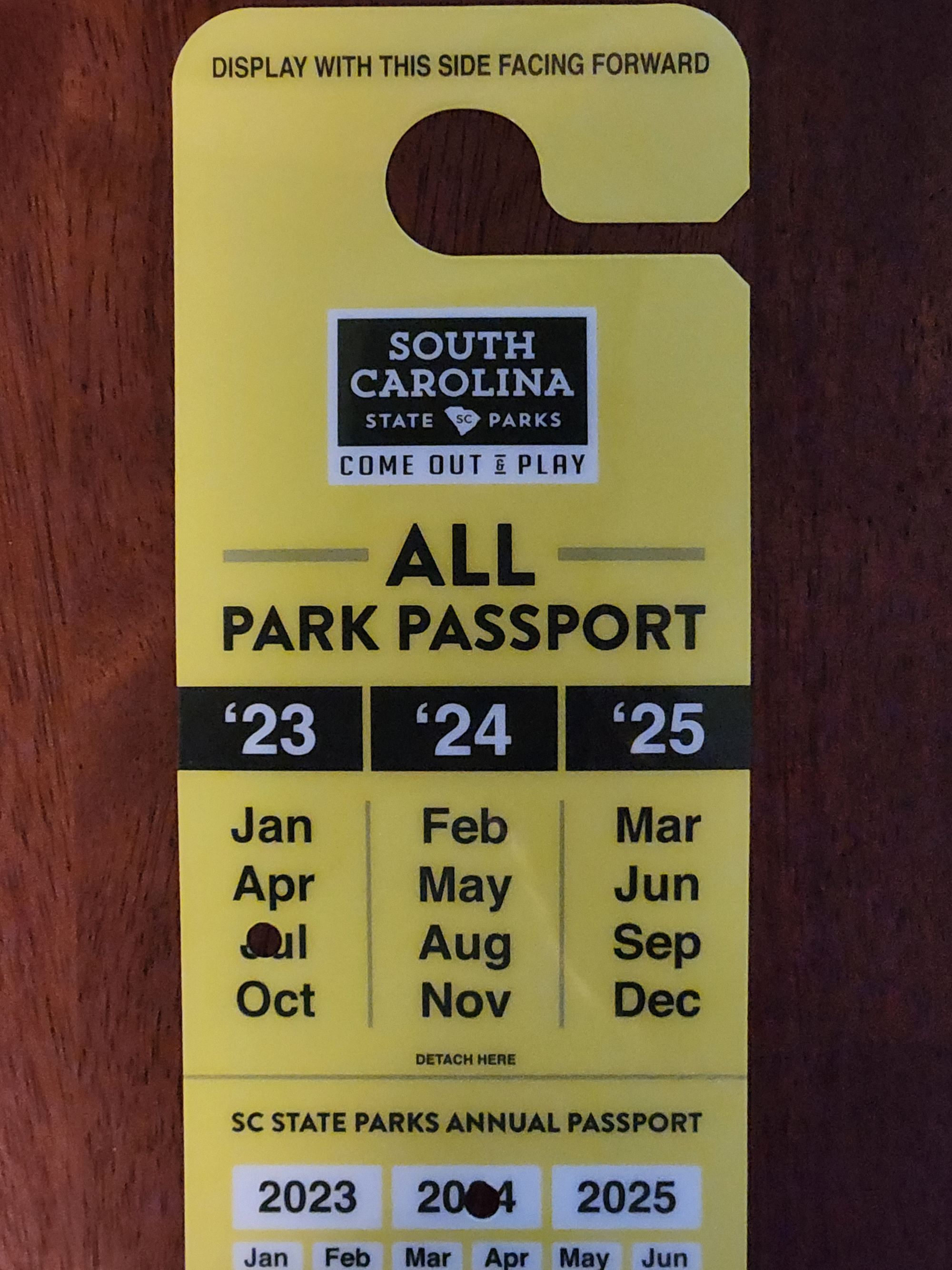
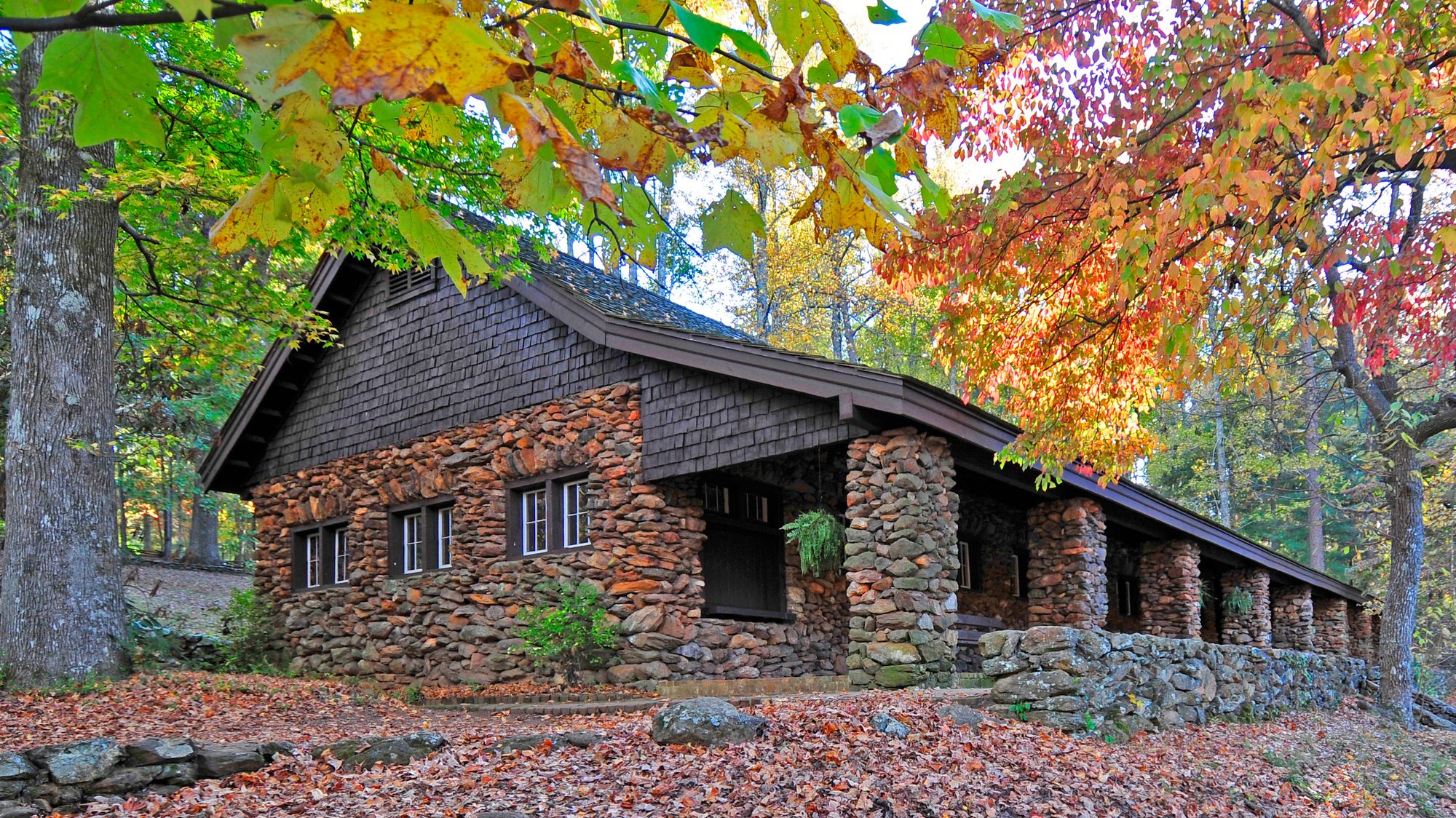
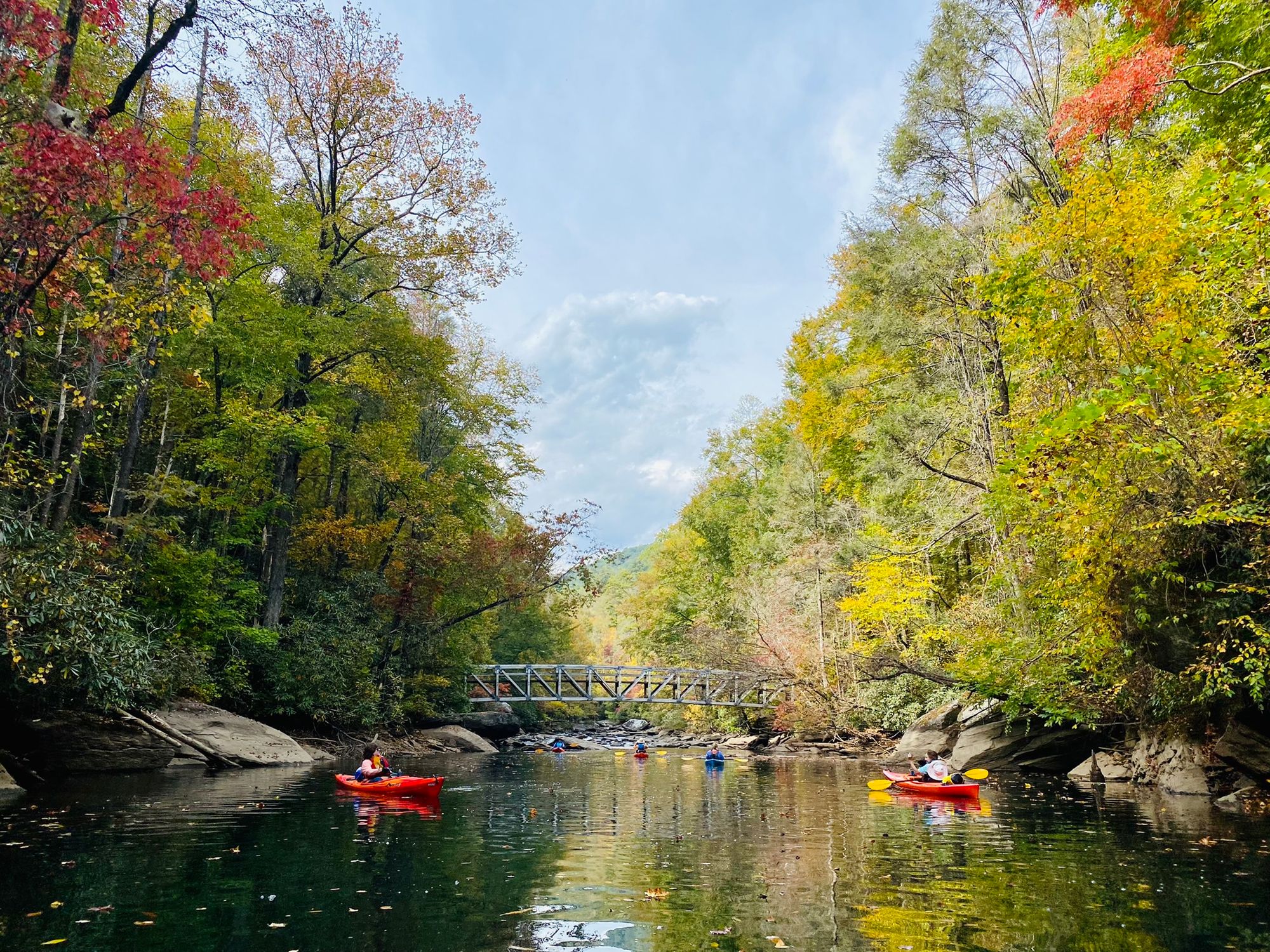
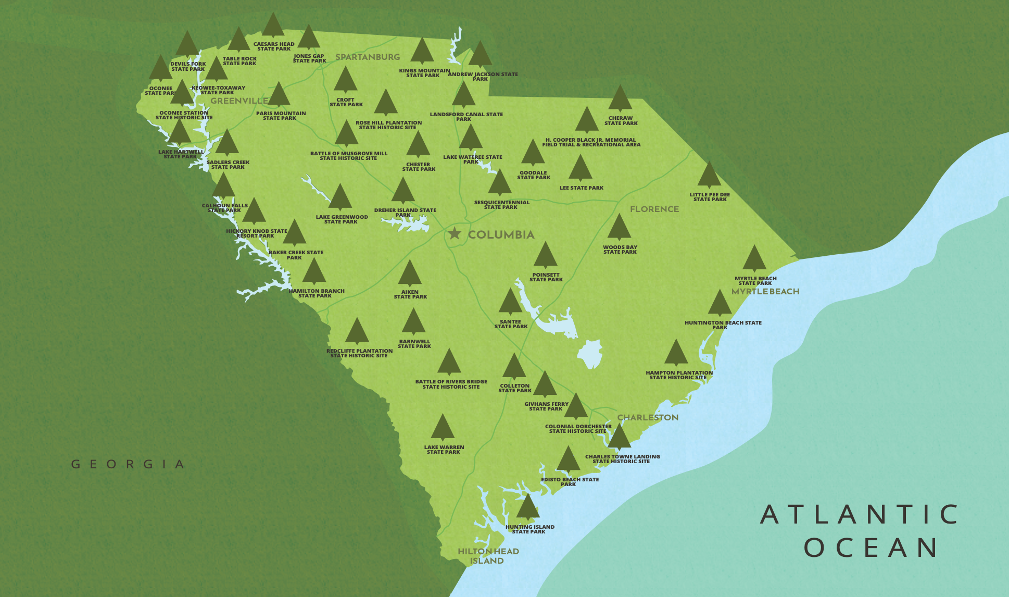
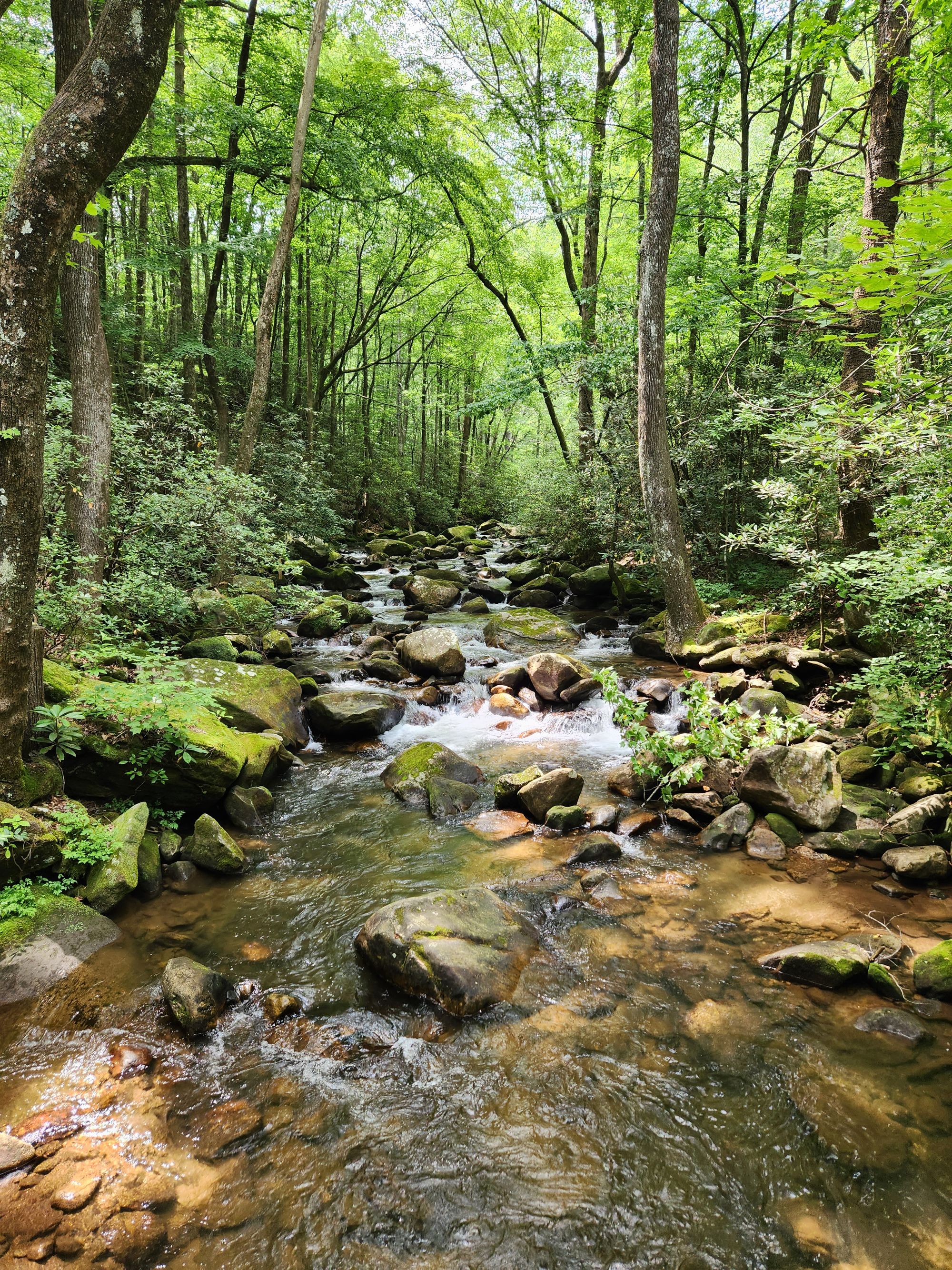
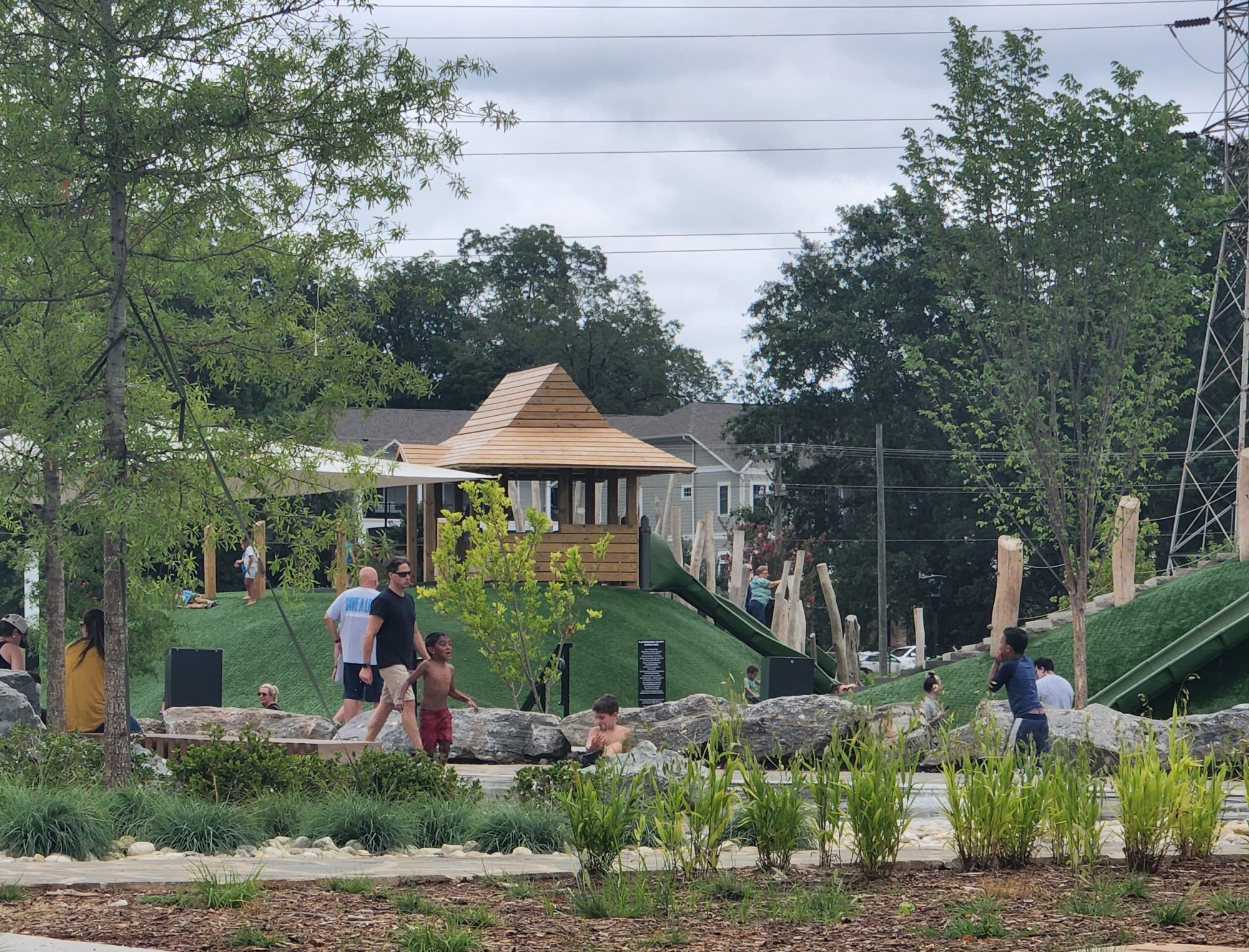
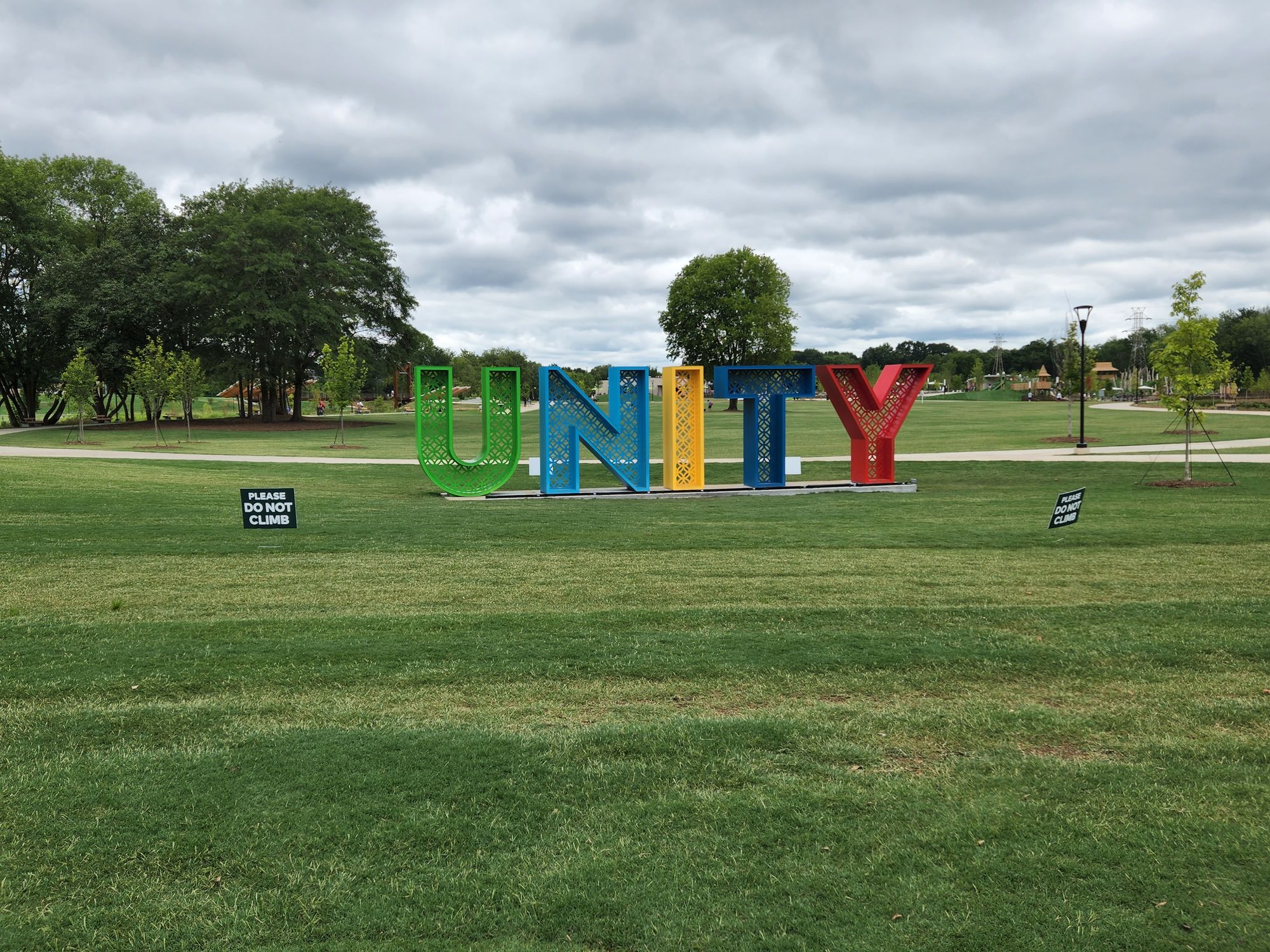
My Passport to S.C. State Parks + State Map of Parks + Scenes from parks near me: Stone building at Paris Mountain State Park + Kayaking Lake Jocassee at Devil's Fork State Park + Mountain stream at Jone Gap State Park + Scenes from Unity Park in City of Greenville, SC
-Additional Thoughts
Watch this short video about the partnership between the SC Parks and Black Folks Camp Too.
Learn more about SC State Park partnership for use of all-terrain track chairs. If you look closely at Waymaker's photos, you'll spot Chris Sparrow, from our last week's challenge. Of course, Chris would be out adventuring in an offroad wheelchair!
Learn more about Mobi-mat portable, roll-out mats for beach access.
Good news from Minnesota State Parks about their expansion of all-terrain track chairs.
Week 7 - Our Part of the Mess
One must always be aware, to notice even though the cost of noticing is to become responsible. – Thylias Moss
In a system problem, if you’re part of the system, you’re part of the problem. - Dave Gray
This week's challenge prompts us to take a first step toward locating ourselves within the system.
-Challenge
- Take a look at your favorite outdoor gear. Who makes it? Where did you buy it?
- What are the outdoor organizations you support, endorse, or donate to?
- What do you know about their commitment to equity and inclusion?
-Questions/Reflections
- Make a short list of entities to explore.
- What can you learn about them? What are their values? How do they embody diversity and inclusion in their products, marketing, images, and actions?
- Are you happy with what you see? Is there anybody you should drop? Anybody you should support more?
In the comments, feel free to share what you learned. Call out anyone you think could do more, or recognize anyone you think is stepping up. (You'll need to sign in to comment)
-My Experience
Certainly, the gear we buy and the organizations we support are only one way that we are part of the Outdoor System. However, this exercise gives us a small taste of what it means to locate ourselves within the system and examine the choices we are making. In my Week 7 Experience, I took a look at the companies behind the gear you see in the photo below, spent a little time locating myself in the system, and challenged myself about what I found.
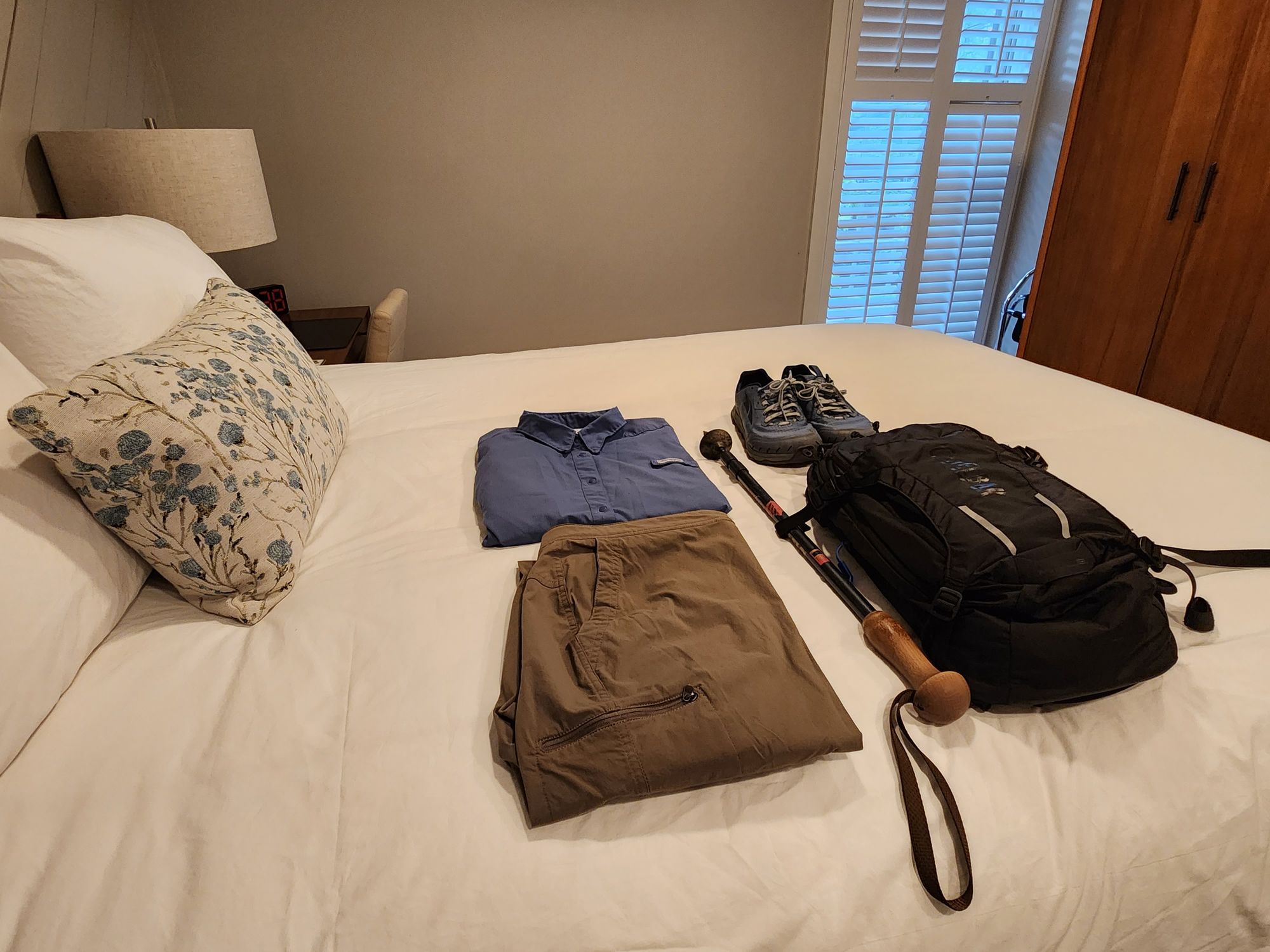
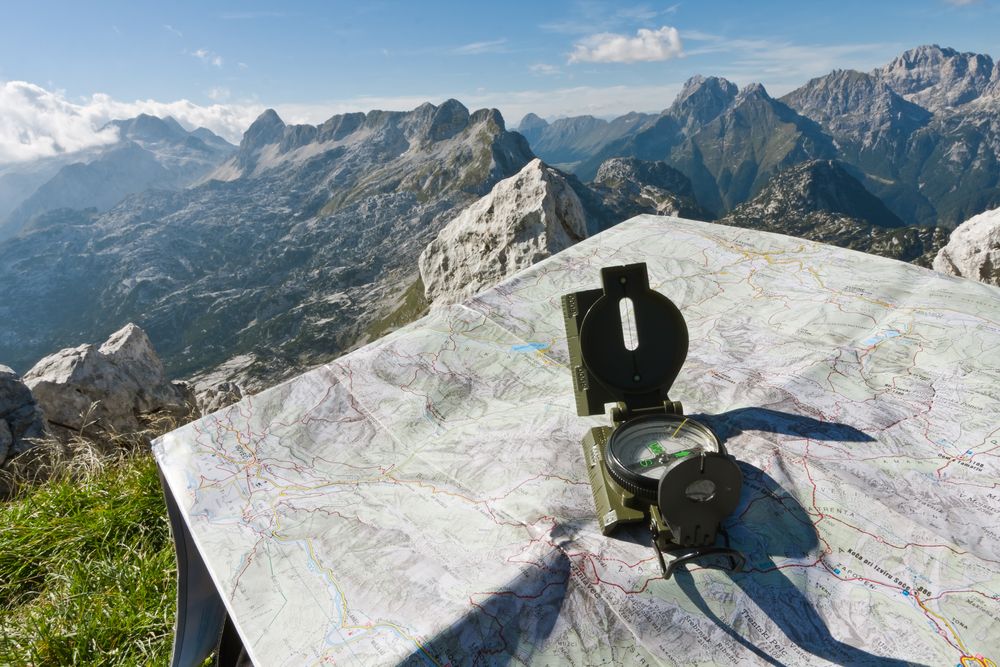
My Gear: Columbia PFG Tamiami Shirt, Altra Trail Running Shoes from REI, LLBean Comfort Trail Pants, Camelbak Mule hydration pack, Leki hiking pole. Image of compass, map, and mountains.
-Additional Thoughts
If you have time for only one more thing. Check out this community guide created by REI - Outside in 5: Community Guide for Closing the Nature Gap. Really well done and full of ideas and resources you can use in your own community.
Need even more food for thought? REI sponsored this work and published it in partnership with The Atlantic: Five Ways to Make the Outdoors More Inclusive: An Action Plan for Change.
Looking for an organization to support or get involved with? Here's a list of 15 Organizations Advancing Diversity Outdoors.
Plus a few more:
-Outdoor Industry Coalitions
I learned that REI and Camelbak were part of the coalition called Camber Outdoors. Camber is a nonprofit organization founded in 1996 that equips Partner organizations across the $887 Billion Outdoor Recreation Economy to implement best practices in Workplace Diversity, Equity, and Inclusion.
Learn more about the Running Industry Diversity Coalition (RIDC) where Altra is a member.
Learn more about Together Outdoors, a coalition of outdoors-related organizations, businesses and land management agencies that share a commitment to making the outdoors a more welcoming, inclusive, and enjoyable place for all.
Week 8 - It Starts With Play
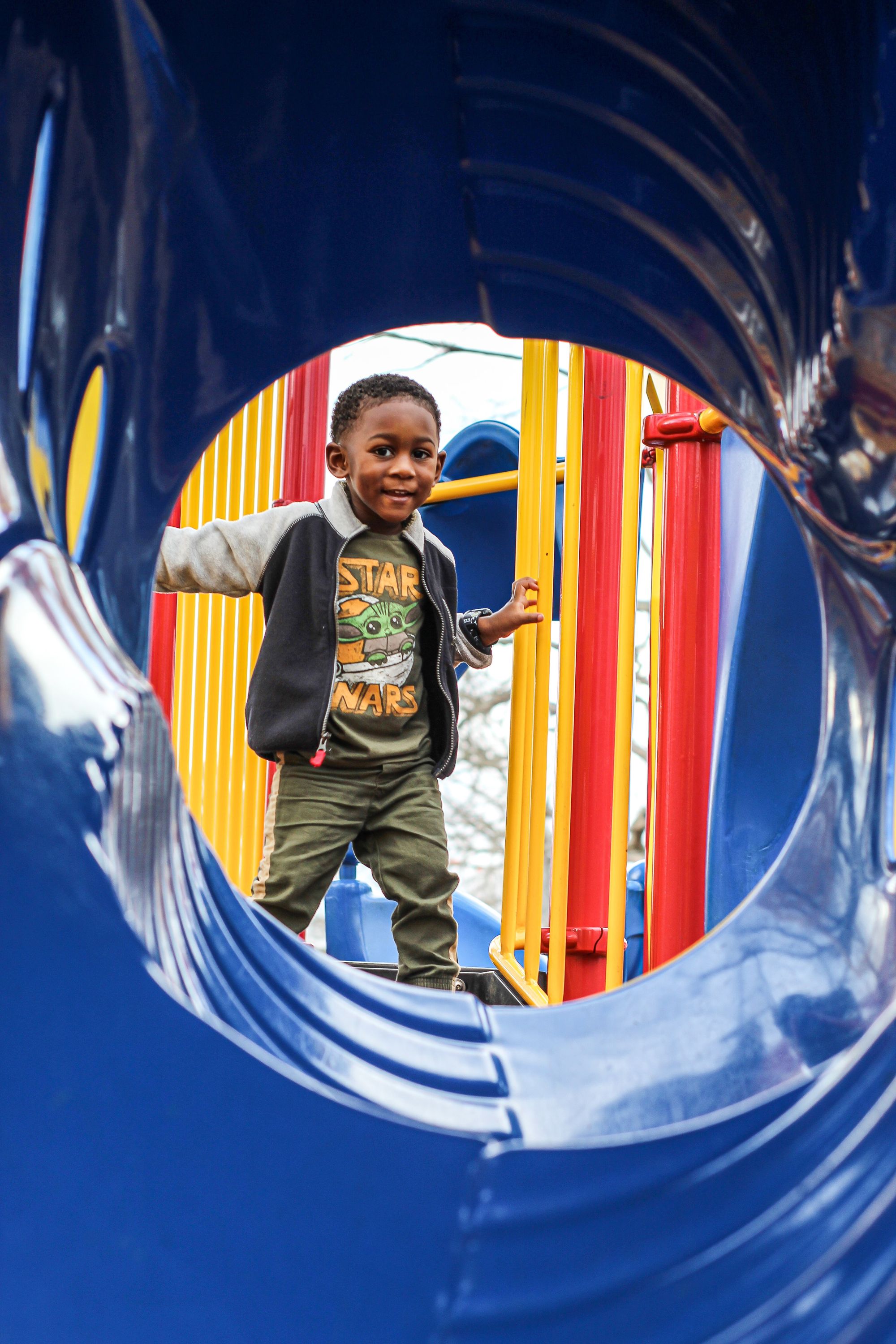
In nature, children learn to take risks, overcome fears, make new friends, regulate emotions, and create imaginary worlds. - Angela J Hanscom, Balanced and Barefoot
This week's challenge prompts us to think a little bit more about how the love of the outdoors begins. For the very young amongst us, we know it begins with outdoor play. So, we ask ourselves, what are the play options that exist in the community around us?
-Challenge
- Check out the playground of the elementary school closest to you.
- Locate your closest adaptive public playground and visit.
- Compare play spaces in different parts of your community to see how they stack up against one another.
- Beyond public playgrounds, what kinds of natural elements exist nearby that could offer opportunities for unstructured outdoor play?
-Questions/Reflections
- What is the condition of the play space and the equipment? Does it look well-maintained and safe? Is there shelter from the sun? Does it include grassy areas and natural elements? Do you think all kids would be able to access and enjoy the play space? Does it contain adaptive play elements? Are these spaces public, free, and open to all?
- How might a lack of adequate access to quality and inclusive outdoor play space for any children in your community negatively impact all of the children in your community? What might be some of the broader and longer-term impacts for the community as a whole?
In the comments, feel free to share what you learned. (You'll need to sign in to comment)
-My Experience
In this week's experience, I had the opportunity to visit two local playgrounds: a recently renovated and adaptive city playground as well as my local elementary school playground. See the pictures below. We'll also hear from Amanda McDougald Scott, a local expert on family and community studies, and we revisit comments from adaptive athlete and disability activist Christ Sparrow.
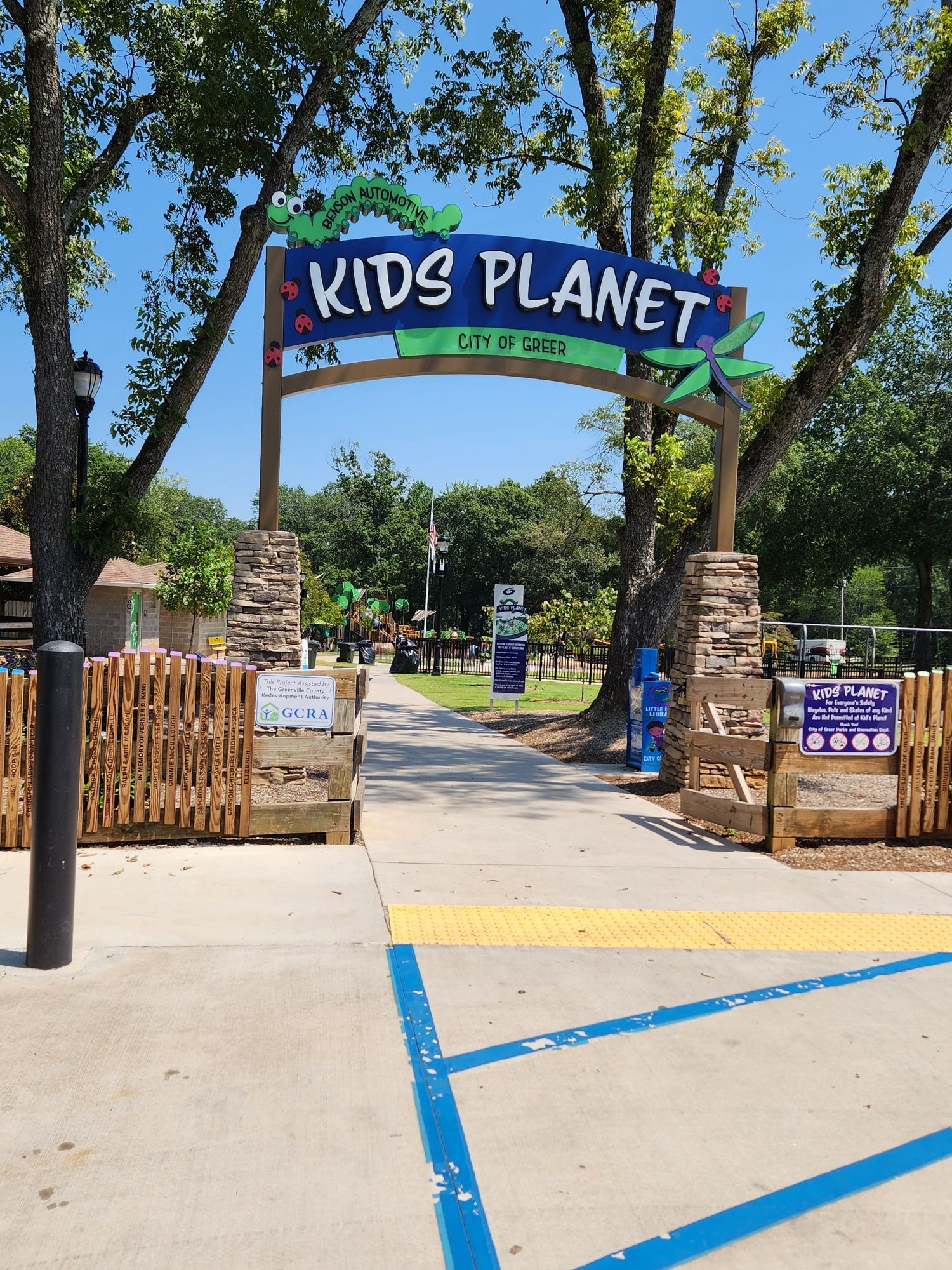
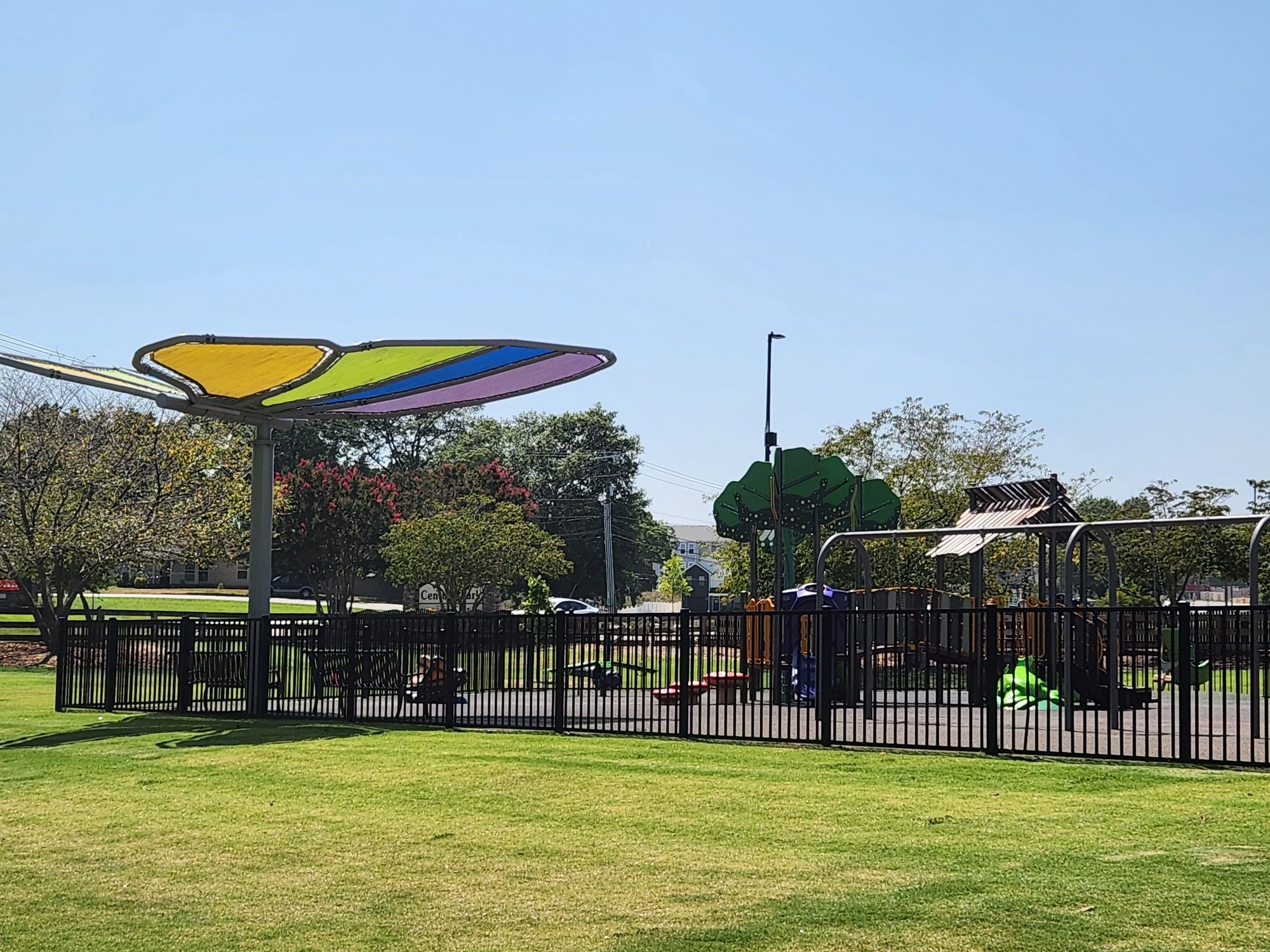
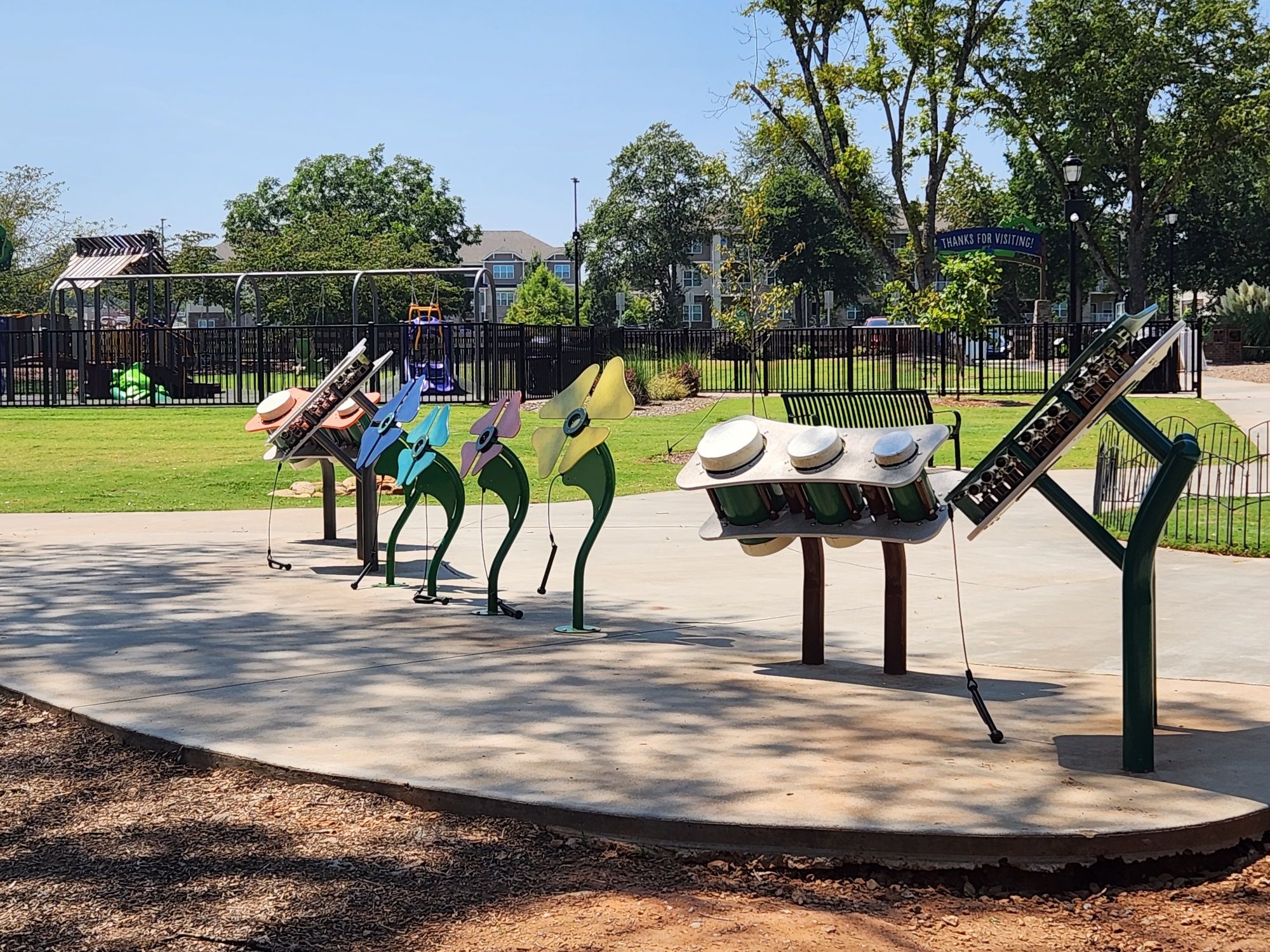
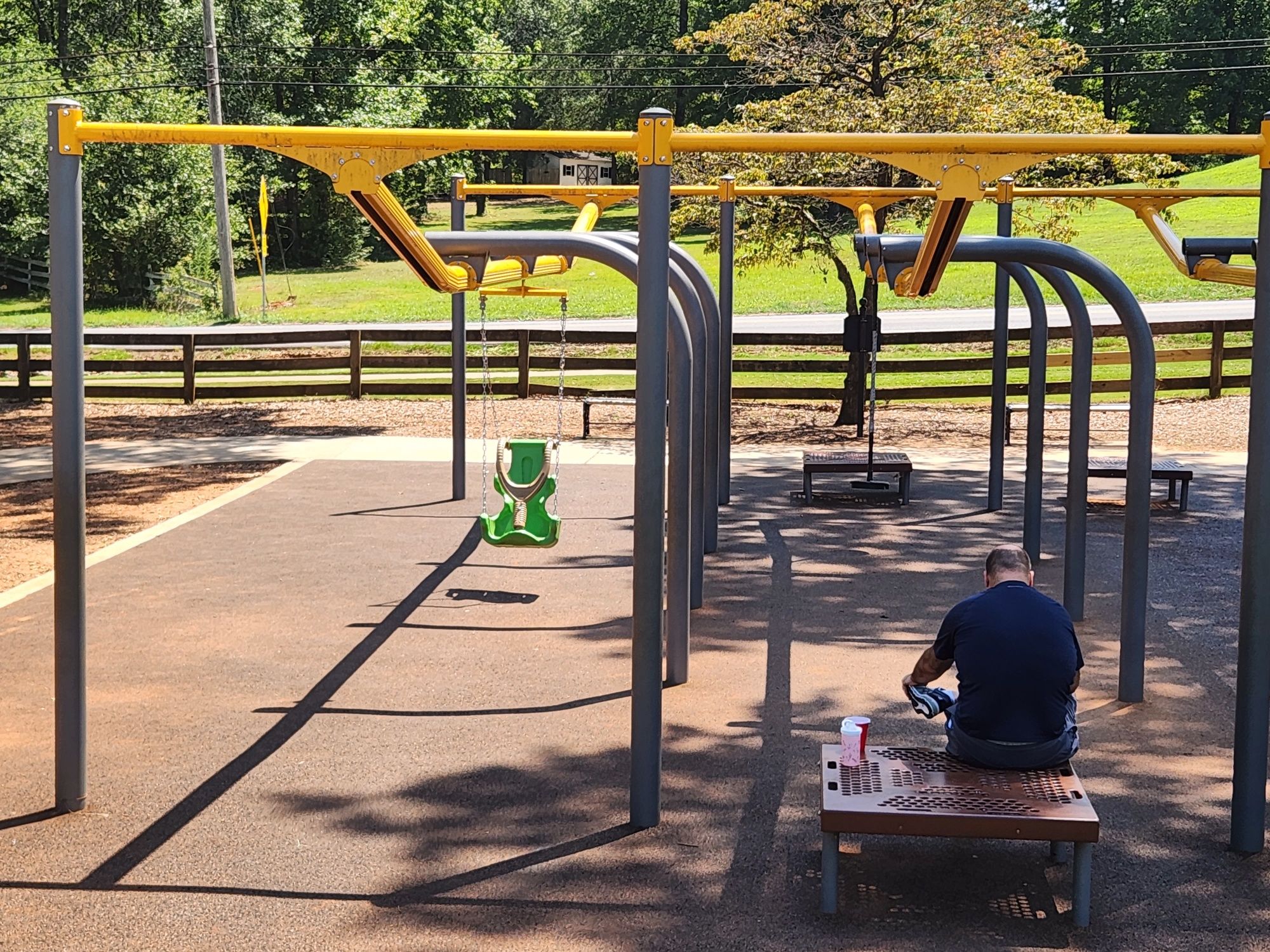
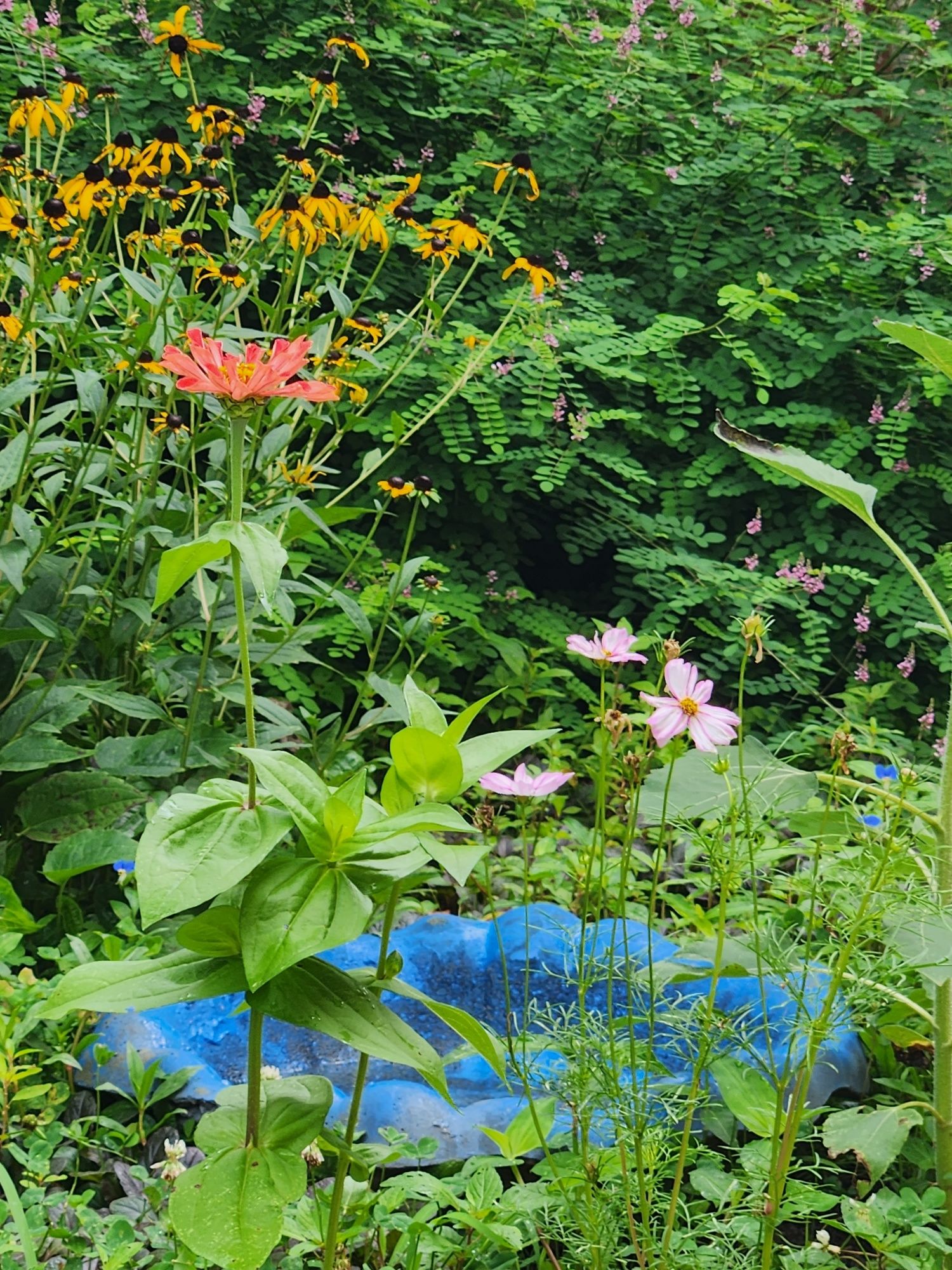
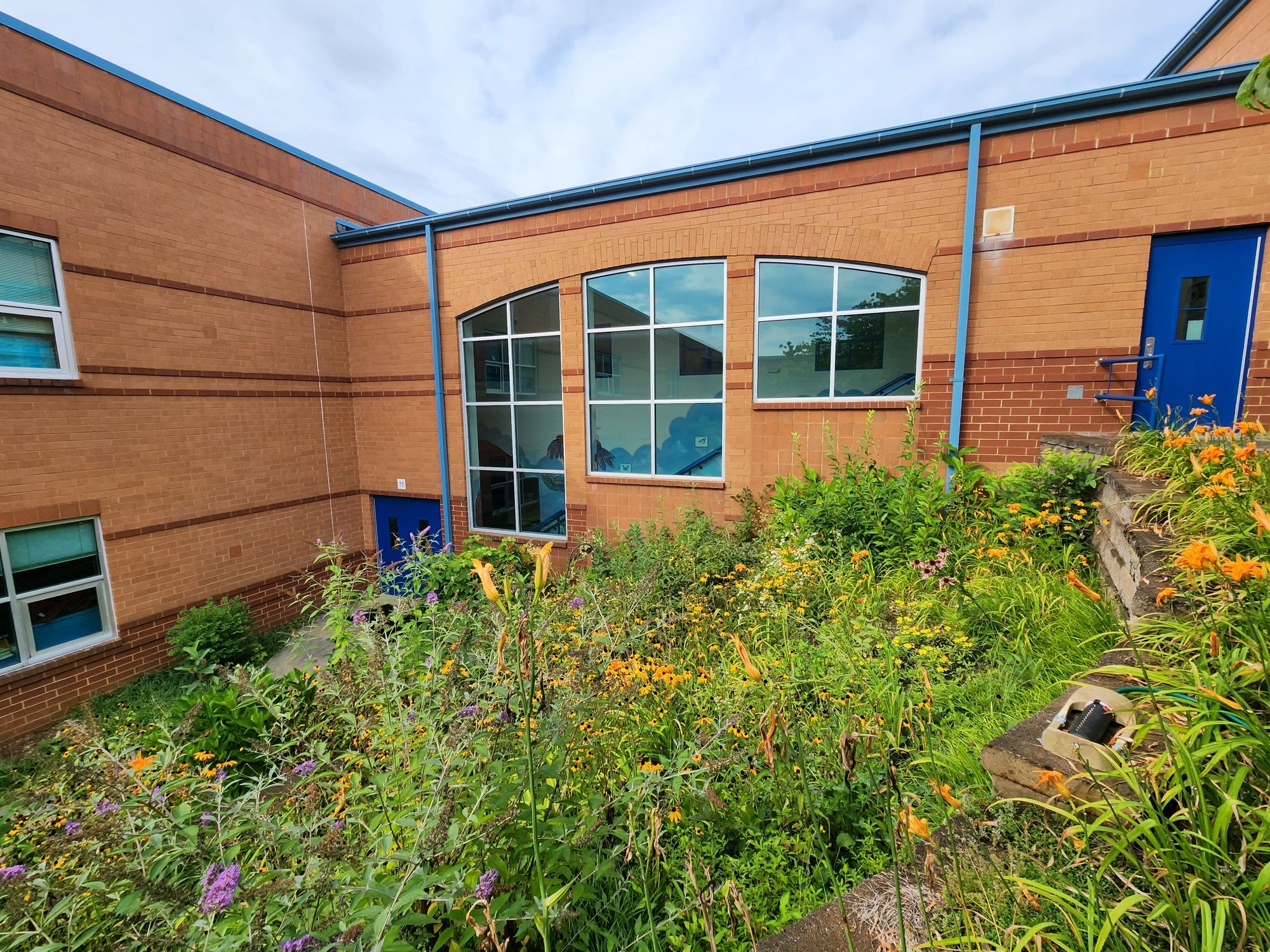
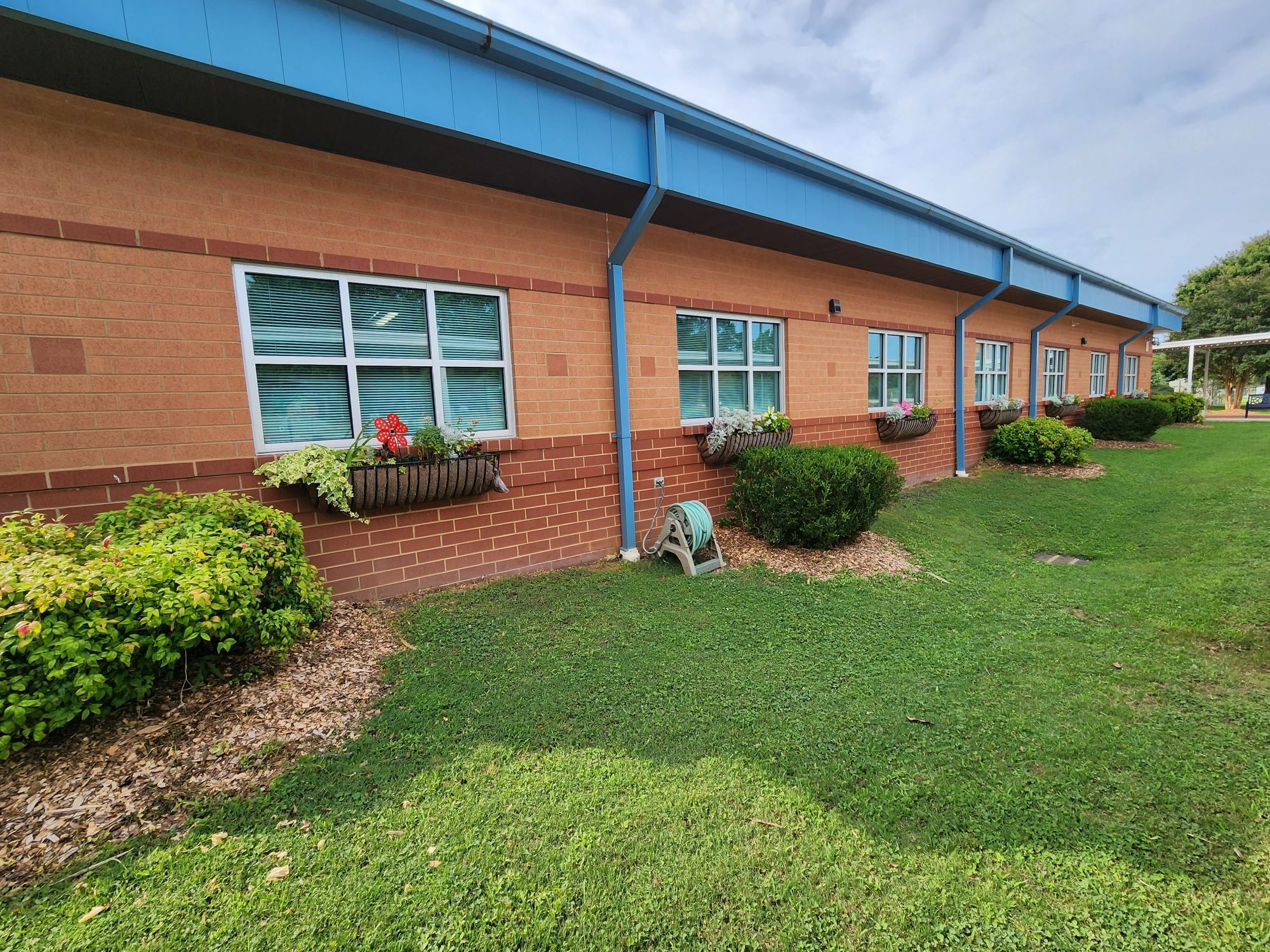
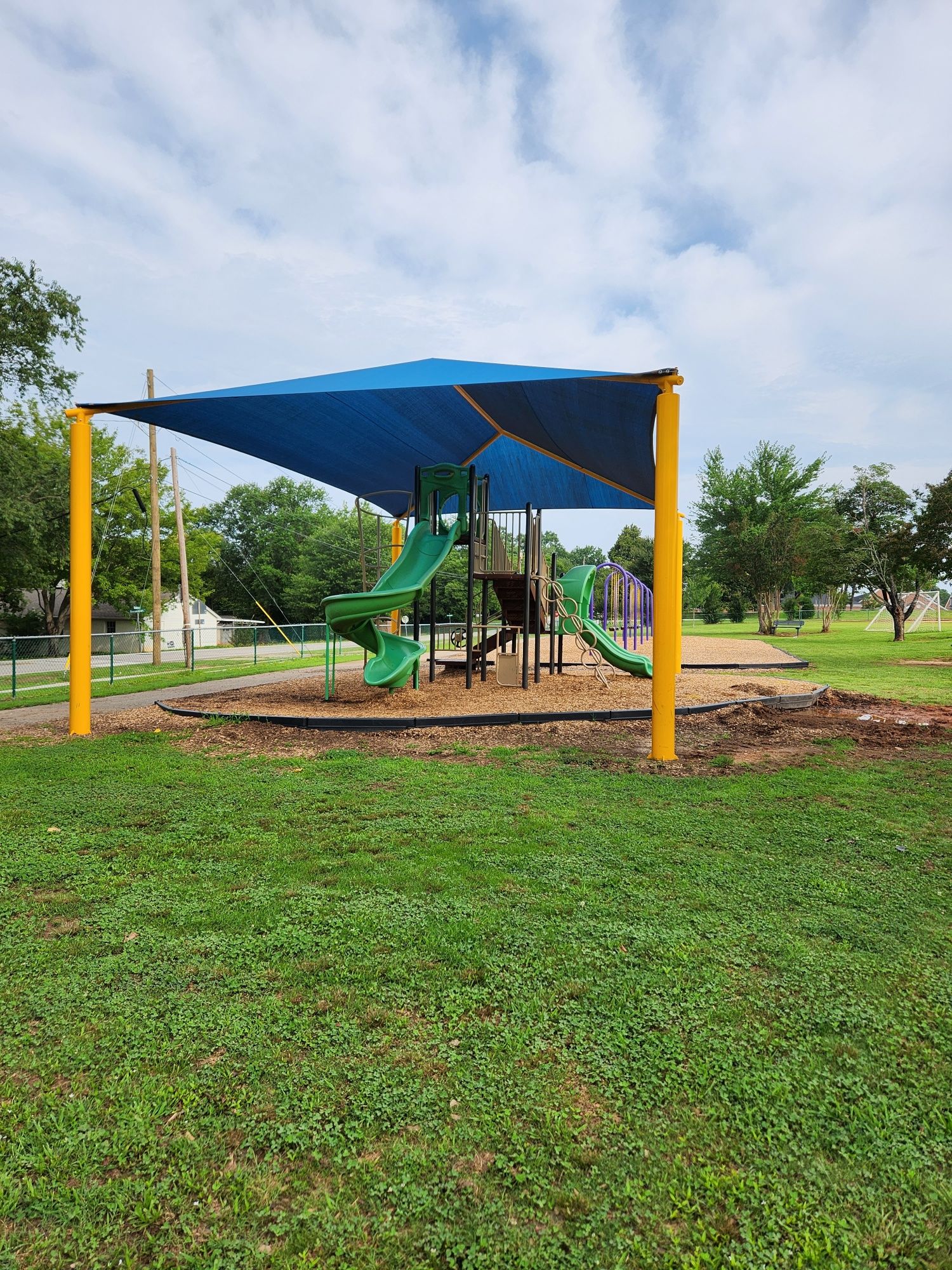
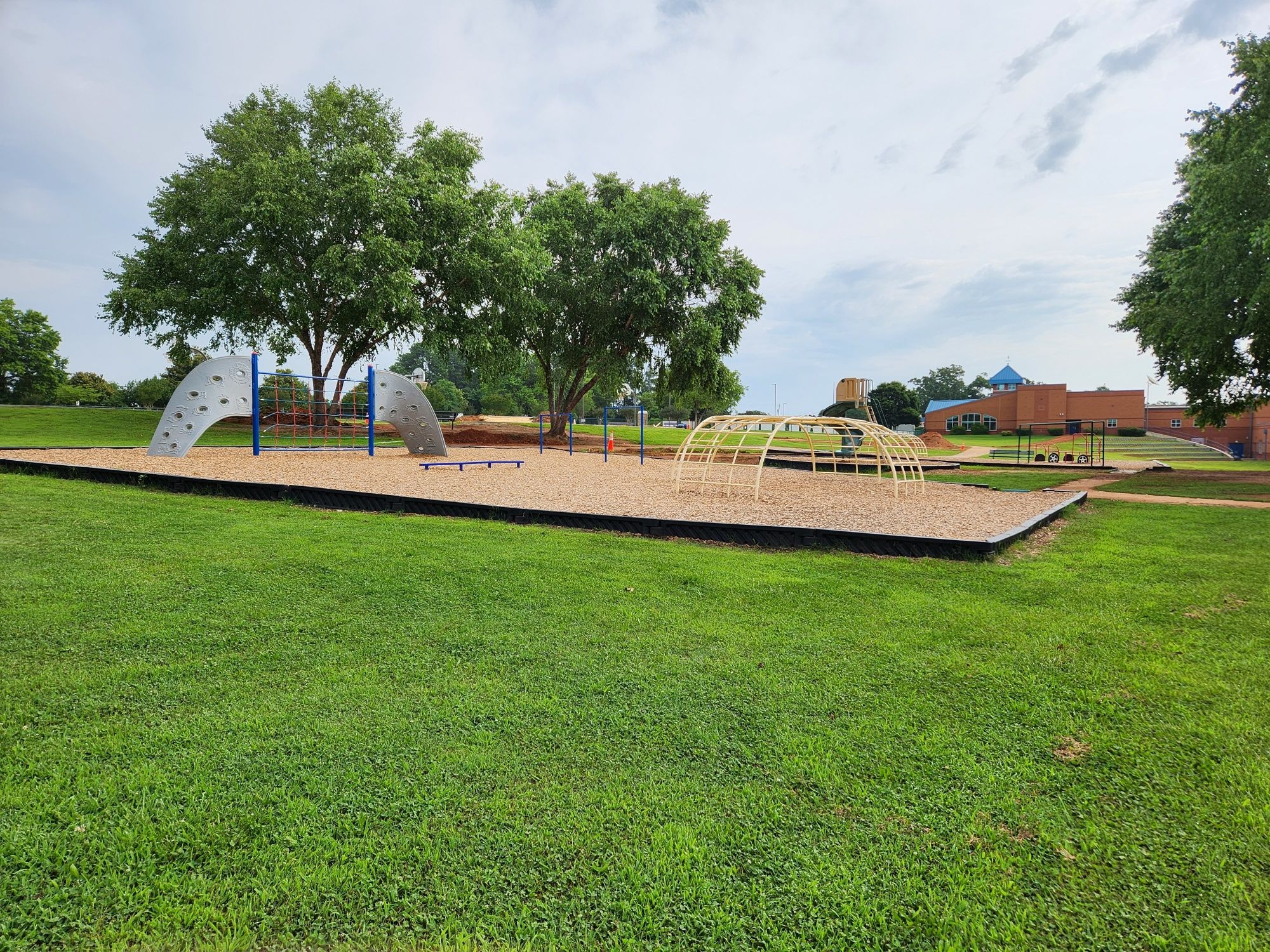
Images from Century Park in Greer, SC + Images from Lake Forest Elementary School in Greenville, SC.
-Additional Thoughts
Playing Outside: Why It’s Important for Kids
The Nature Conservancy: Getting kids outside: one of the best things a parent can do
Finding Nature in Your Neighborhood
Kaboom: Ending Playspace Inequity. For Good.
My local research on playgrounds didn't yield all that I had hoped in my hometown. However, I did come across some wonderful work being done in Pitt County, North Carolina, and their city of Greenville, N.C. A few years back, Greenville opened a lovely inclusive playground. The overview of that playground project and related video give you an idea of what this could look like in a community and the partners who made it possible. In addition, across their county, they have designated all of their schools as community schools and all of the school playgrounds as school parks through joint-use agreements with the county, and they are looking to go even further in their upcoming strategic plan. Pitt County is clearly working to make play more accessible and inclusive for all of the children in their community. Well done!
Week 9 - Speaking Up
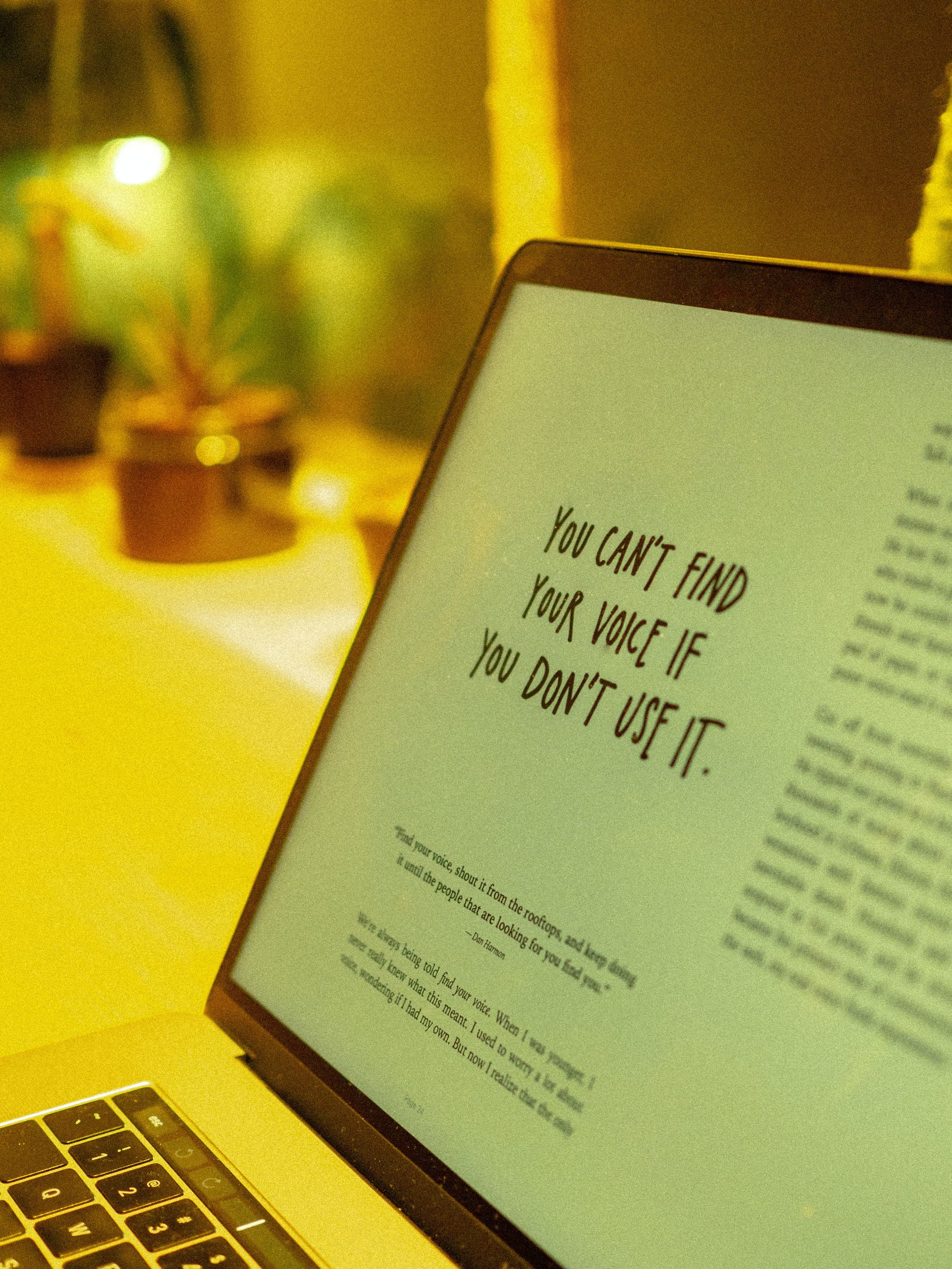
Advocacy is empathy, compassion, and community at work.- Janna Cachola
Welcome to Week 9 of the Inclusive Community Outdoor Challenge! If you're new to the challenge, you can view the full challenge here where you can view past weeks and navigate via the table of contents. You'll also be able to find transcripts for all the weeks' audio on this page.
At the beginning of this 10-week Inclusive Community Outdoor Challenge, we shared that we would be asked to:
- Wake up,
- Listen up,
- Open up,
- Speak up, and
- Step up.
So, after 8 of our 10 weeks, it is about time we found our voice and used it.
-Challenge
- Select one aspect of diversity in the outdoors that matters to you and practice using your voice to speak up about it.
- Then, find another...
-Some Ideas for Action
- Start simple. Spend time talking with a friend about the lack of diversity in the outdoors and why it matters to you and your community. Talking things over with a friend is an easy way to practice using your voice. It can help you clarify your thoughts and crystalize what really matters to you. Be sure to listen to them as well. This is a conversation, not a monologue.
- Speak the world you want to see into existence. Use your voice and platform to put something positive into the universe, representing the world you want to see. Write, blog, post, share, and/or re-post at least 5 things that demonstrate the inclusion you wish to see in the outdoors.
- Level up your advocacy. Speak up locally and/or nationally to advocate for an outdoor cause you care about. Sign a petition, send a note to your elected officials, show up for a demonstration.
- Join with others. Together is better, and more voices matter. Reach out and add your voice to the voices of others who share a common interest and speak up together.
- Take some risk. Leverage your social and reputational capital to get closer to funders and key decision makers, talk with them, and advocate for changes supporting a more diverse outdoors in your community.
In the comments, feel free to share an aspect of outdoor diversity that has motivated you to speak up or tell us how you are speaking up. (You'll need to sign in to comment.)
-My Experience
In this week's episode, I reflect on how this challenge has helped me discover and use my voice to advocate for diversity in the outdoors. I'll share my perspective on what has gone well and where I still have work to do.
-Additional Thoughts
I love The Melanin Base Camp Guide to Outdoor Allyship. If you're reading this and you're white, it might be a good idea to read their article before taking on this week's challenge. For those of us with a good amount of privilege (and I include myself here), it is a good reminder that when we speak up, we need to check our privilege. Also, it reminds us that in speaking up, we don't have to be the center of attention or the center of the story. We can play a supporting role.
Here's an advocacy opportunity through the Sierra Club as one way to use your voice to support the Outdoors for All Act that is before Congress.
Week 10 - Stepping Up
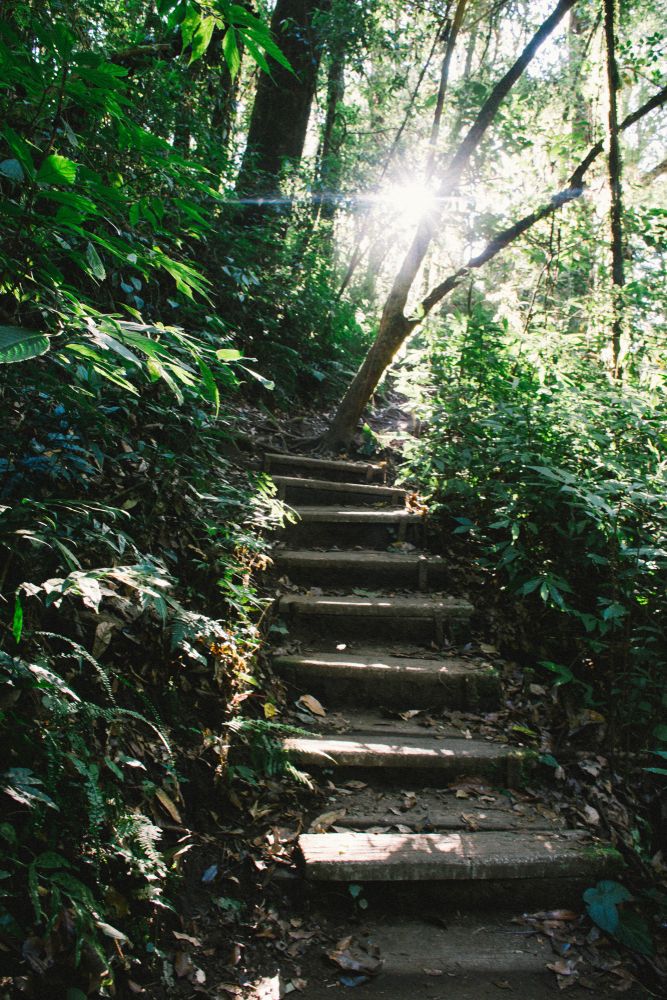
In the long run, we shape our lives, and we shape ourselves. The process never ends until we die. And the choices we make are ultimately our own responsibility.– Eleanor Roosevelt
If you think you are too small to make a difference, try sleeping with a mosquito.— Dalai Lama XIV
We're finally here!
It's Week 10 of the Inclusive Community Outdoor Challenge! View the full challenge here, where you can view past weeks and navigate via the table of contents. You'll also be able to find transcripts for all the weeks' audio on this page.
-Challenge
What is at least one step you will take toward building a more inclusive outdoor community?
-Questions/Reflections
- What are the nuggets of wisdom that you will take away from this challenge experience? In what way do you look at things differently or feel changed from your experiences? Where did you find unexpected joy? Where and with whom did you experience community?
- Where do you plan to focus your attention going forward to build a more inclusive outdoors? With whom will you be in community around this work?
-My Experience
As the last week of our challenge ends, my short audio is more about reflection than experience. You can listen to how I processed the 10 weeks of this challenge along with a few thoughts about stepping up to build a more inclusive outdoors.
One part of my personal experience of stepping up to build a more inclusive outdoors involved finding a local outdoors organization with a strategic commitment to social justice and equity and then working to support them. One of the organizations I learned more about during this challenge was Conserving Carolina. Listen to my conversation with Rose Lane of Conserving Carolina and see what impressed me about their approach and why I remain committed to supporting their work.
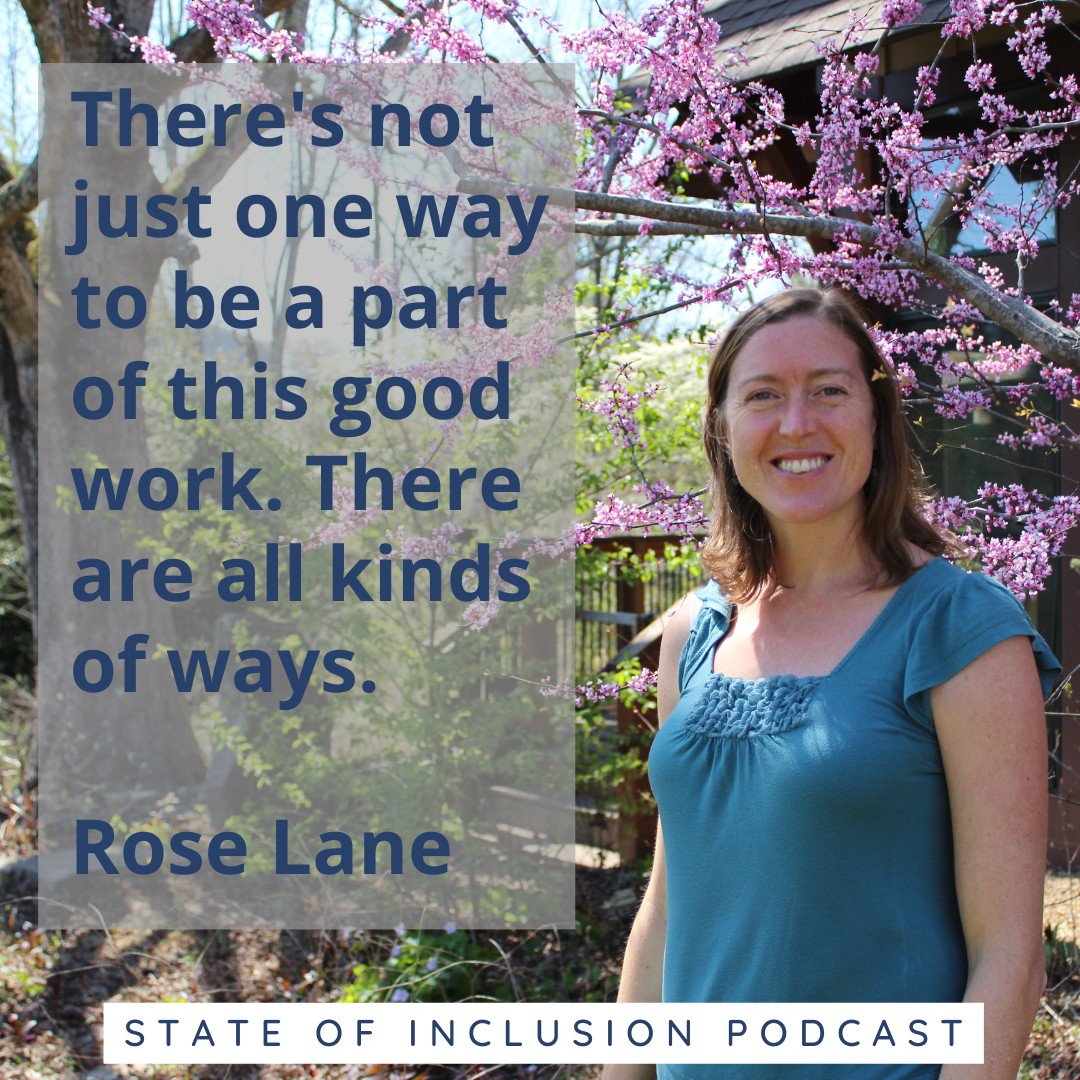
How was I able to step up with Conserving Carolina? I started with a small financial contribution, supported and attended events they were hosting, and used my small platform to recognize and lift up their work through the podcast. Along the way, I also lent my hands in community with others on a hot summer Wednesday to weed and tend their native plant garden - small steps, for sure, but a place to begin.
-Additional Thoughts
I mentioned that some of the leaders in the outdoor industry are stepping up and helping build community around this work of social justice and equity.
You might enjoy this REI video about the Friends of Anacostia Park about what one neighborhood has been able to do. Then, explore some of the ways you can participate with REI on their Outside in 5 Initiative.
Patagonia has also created a broad engagement initiative they call Action Works. Check it out.
Thank you for being part of this challenge. Even our small steps can make a difference.
Great acts are made up of small deeds. - Lao Tzu
The small things we practiced together in these ten weeks to build a more inclusive outdoors can also help us to grow and serve us well on our longer and broader journey to build a more inclusive community.
Thanks for reading. If you're interested in building a more inclusive community and world, I'm sure you know others who are too. Please share this newsletter with a colleague or friend.
This newsletter is a publication from State of Inclusion.


